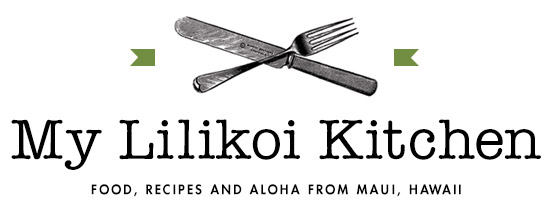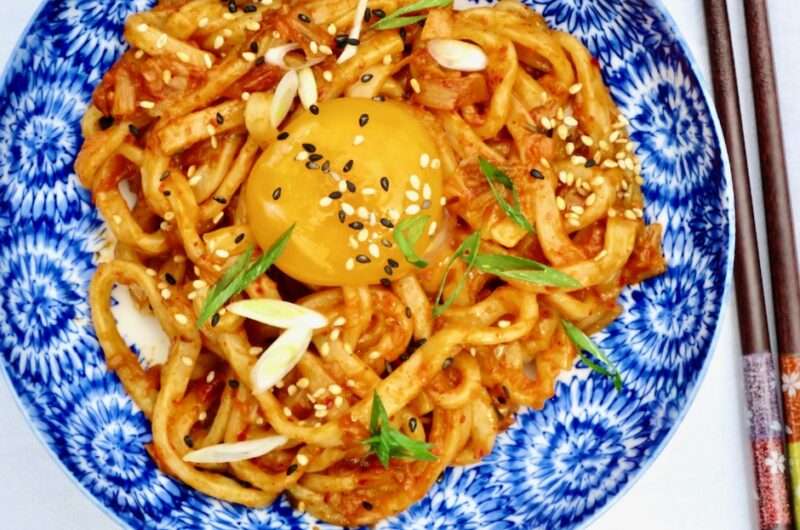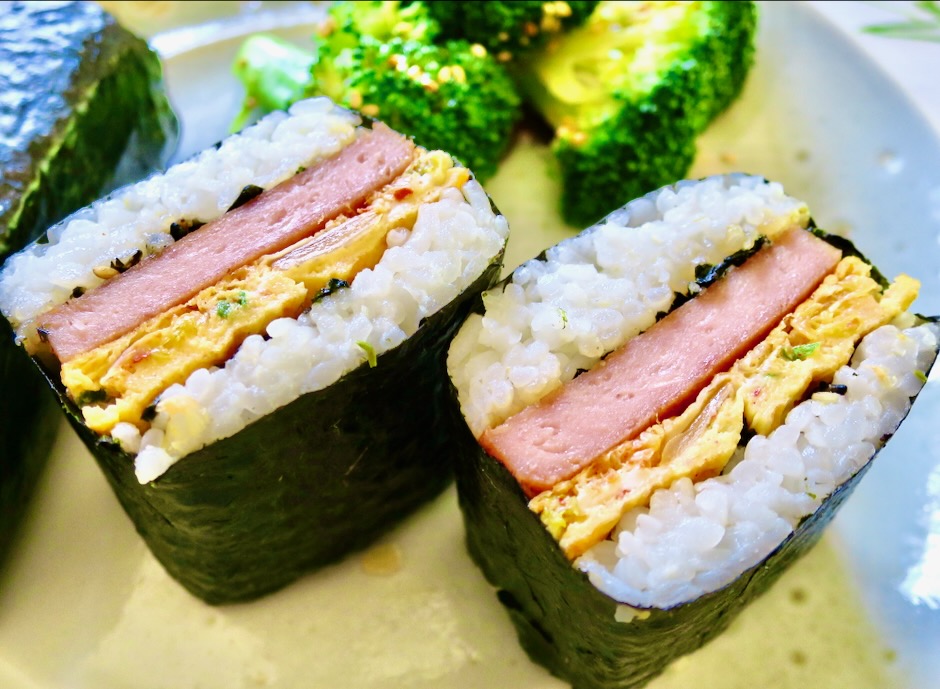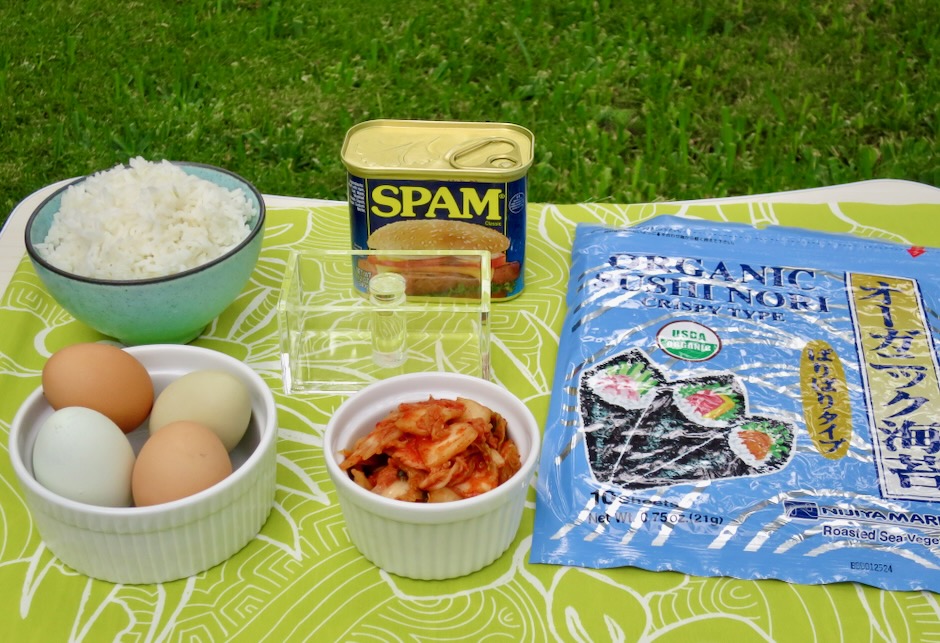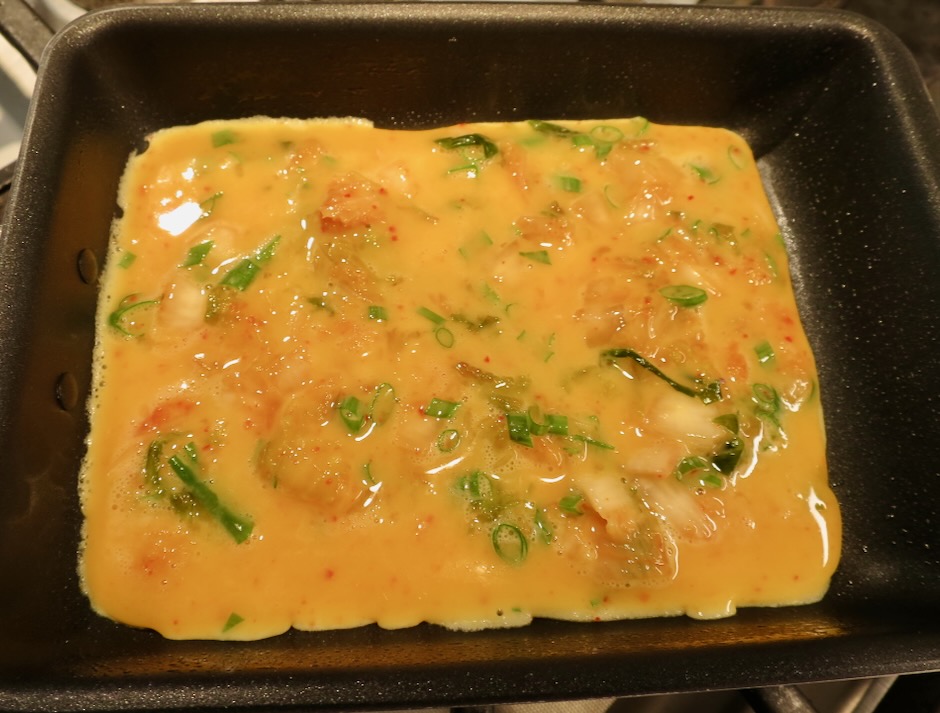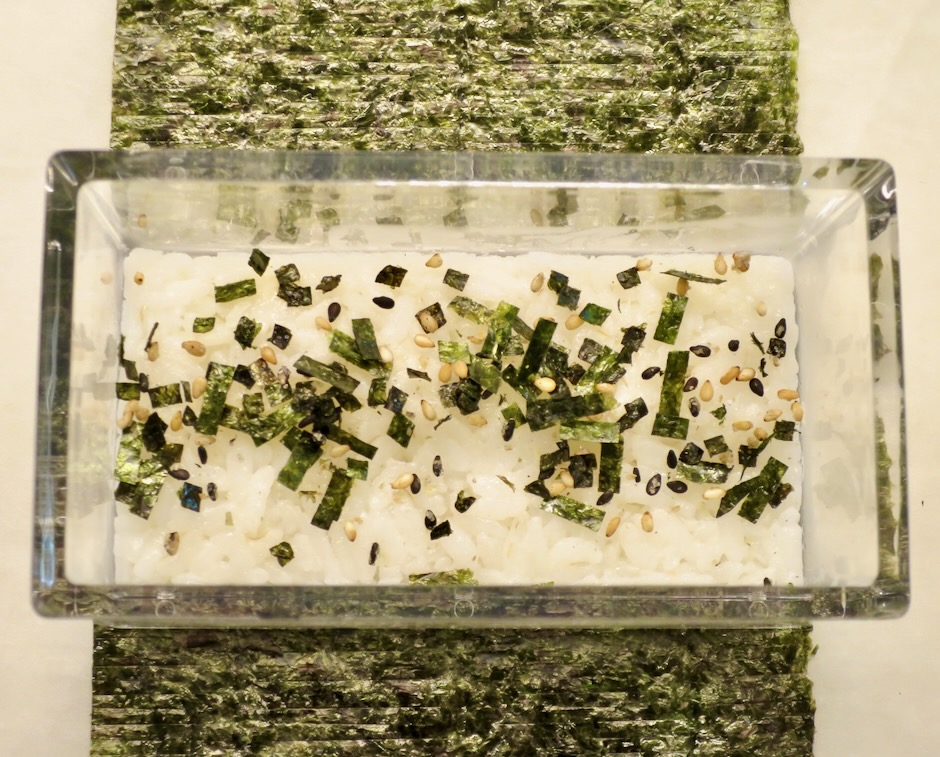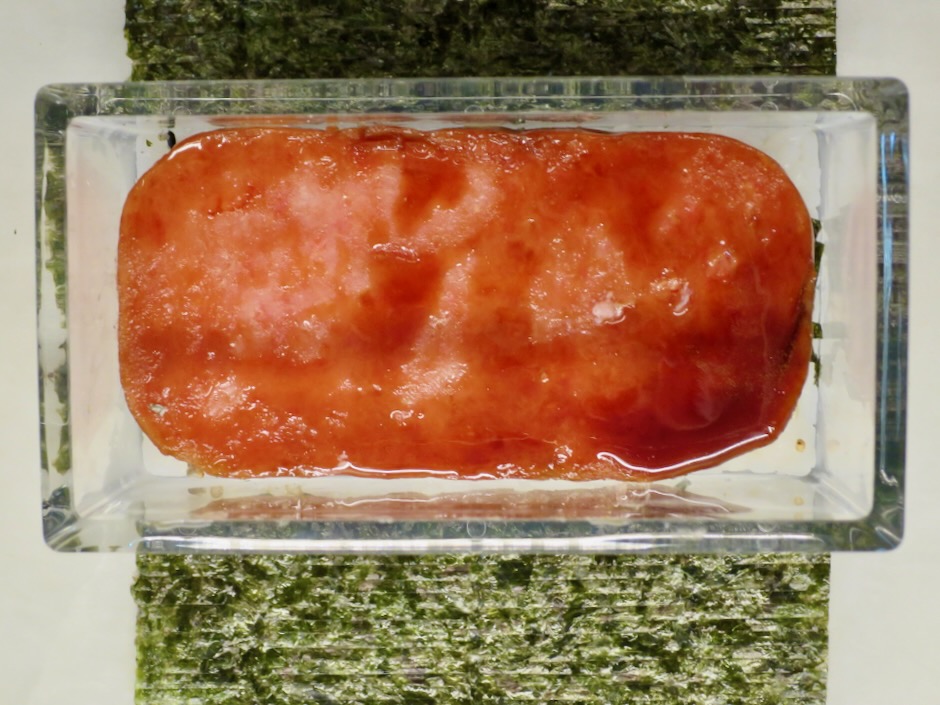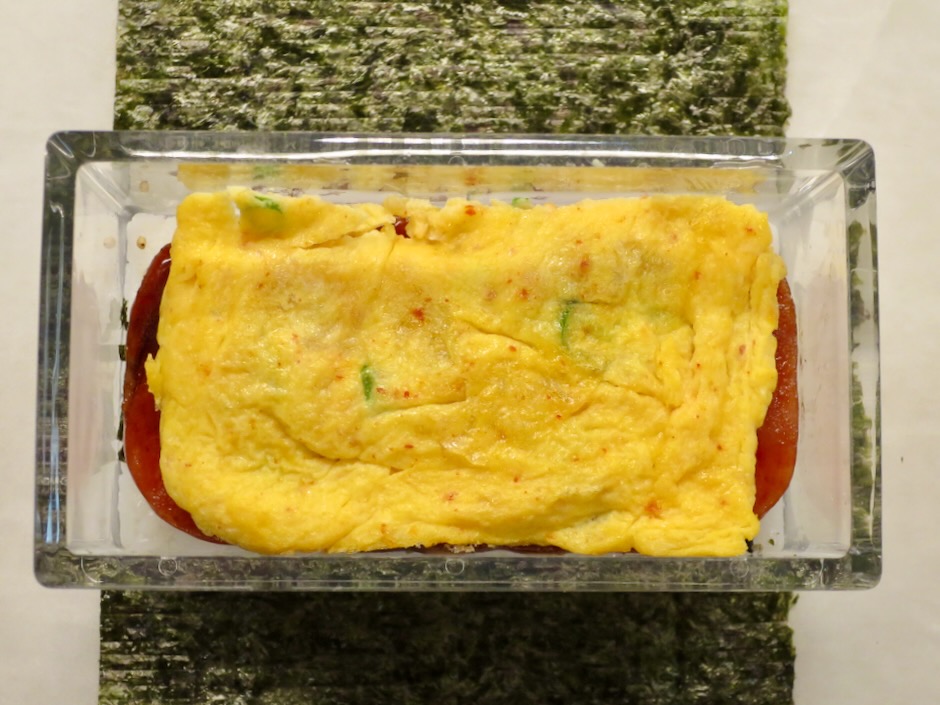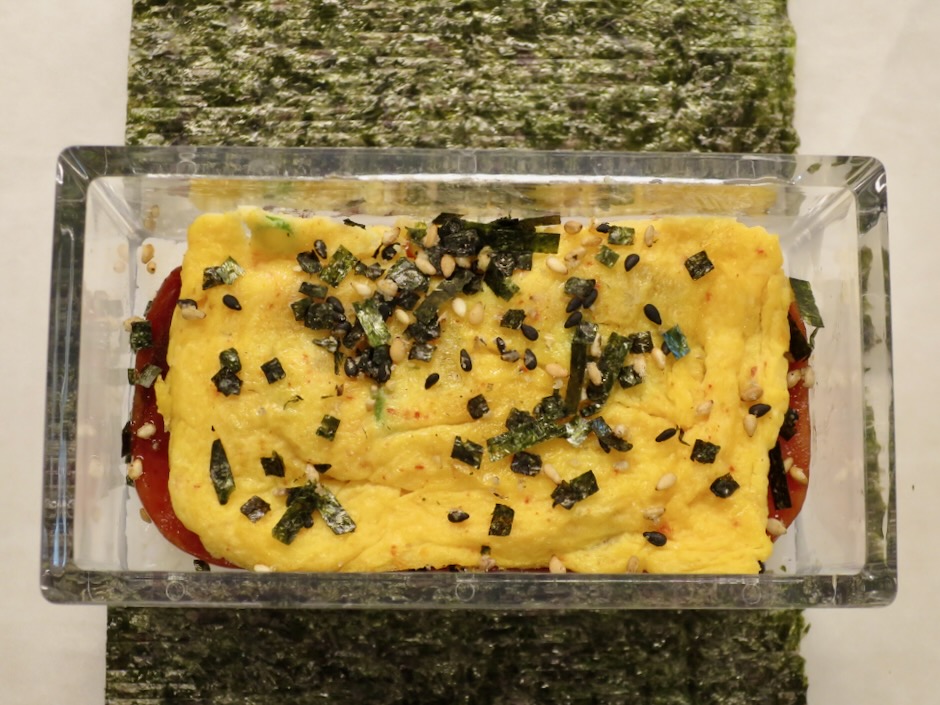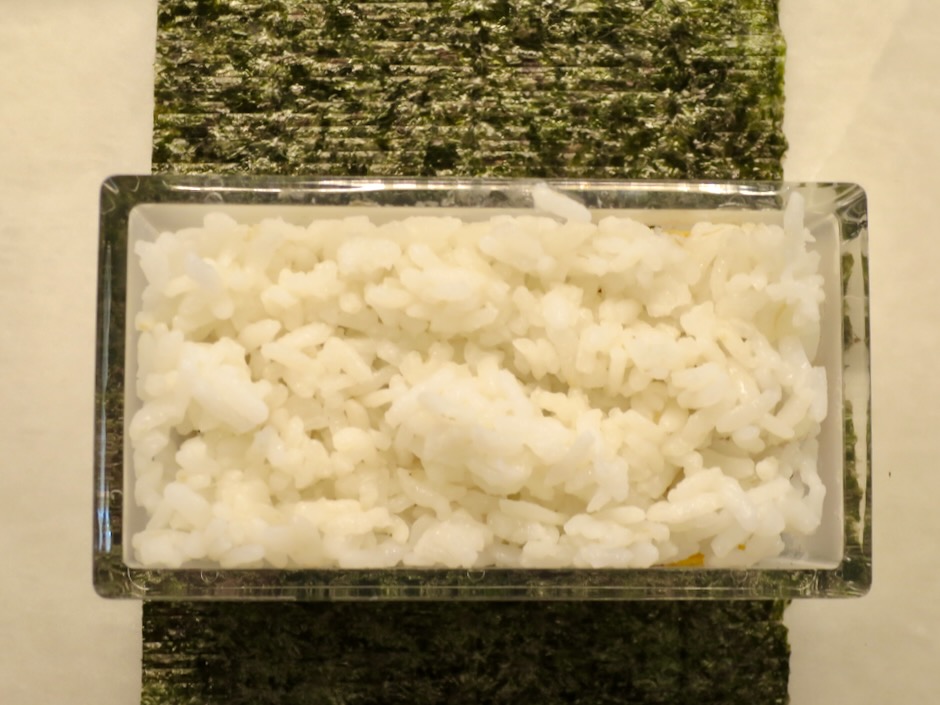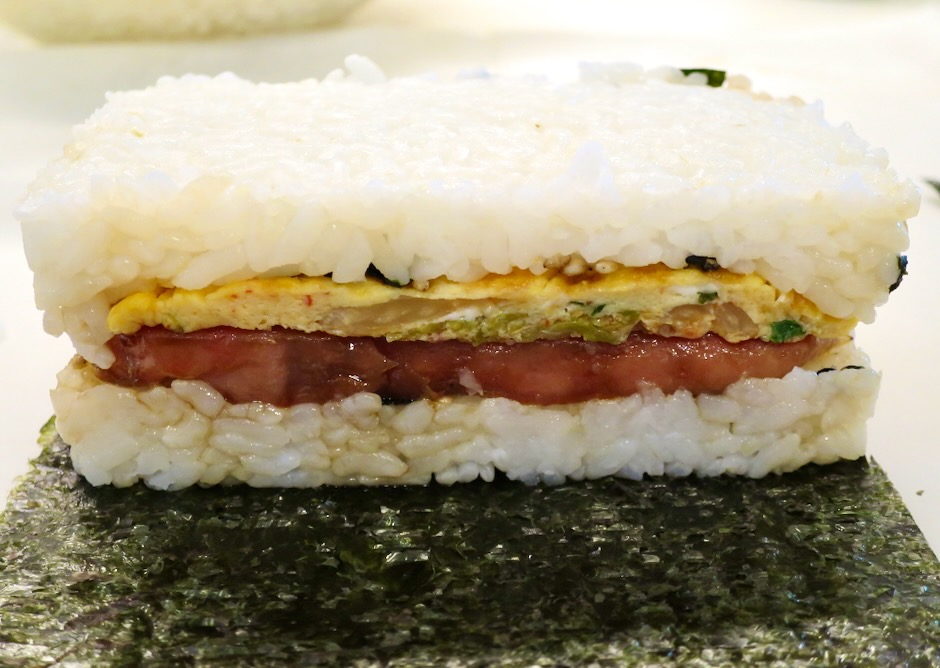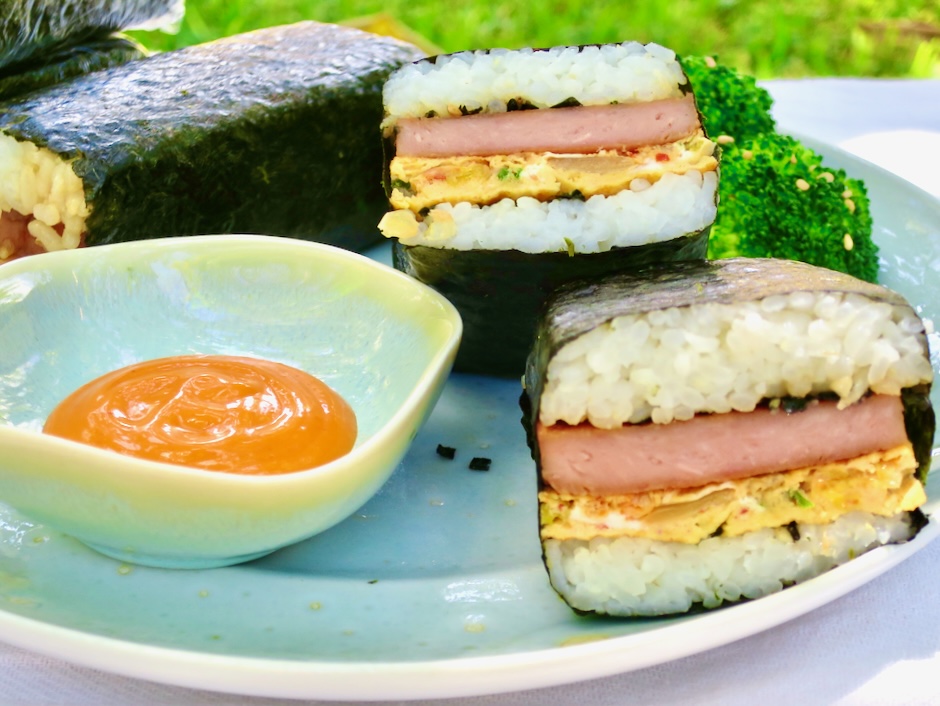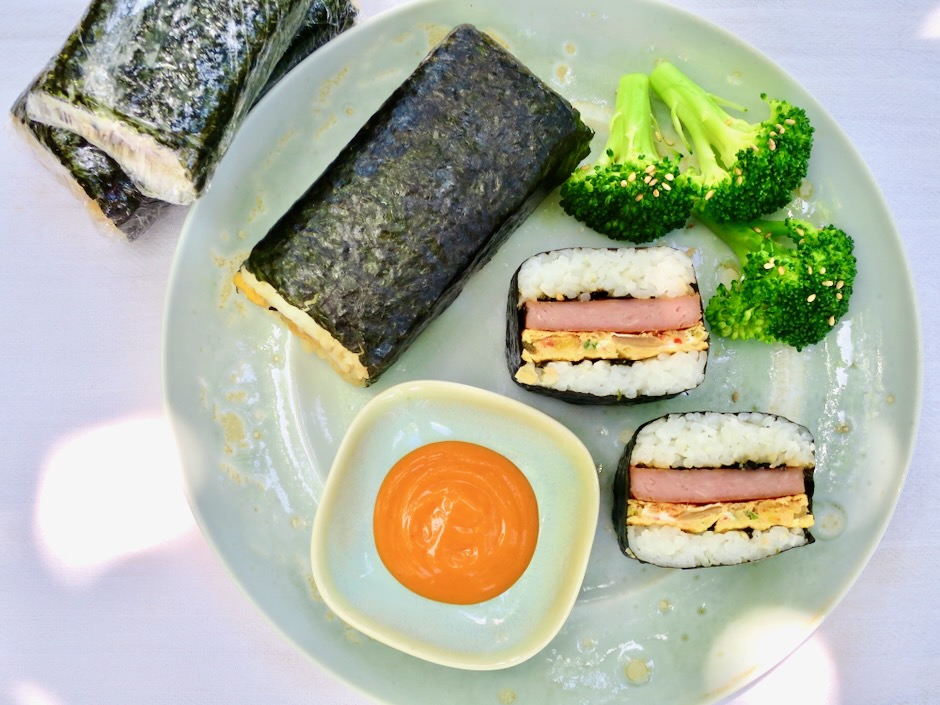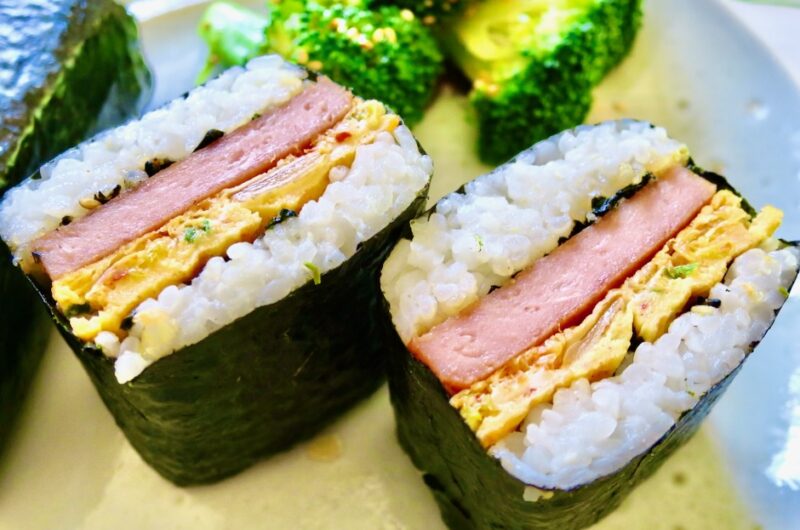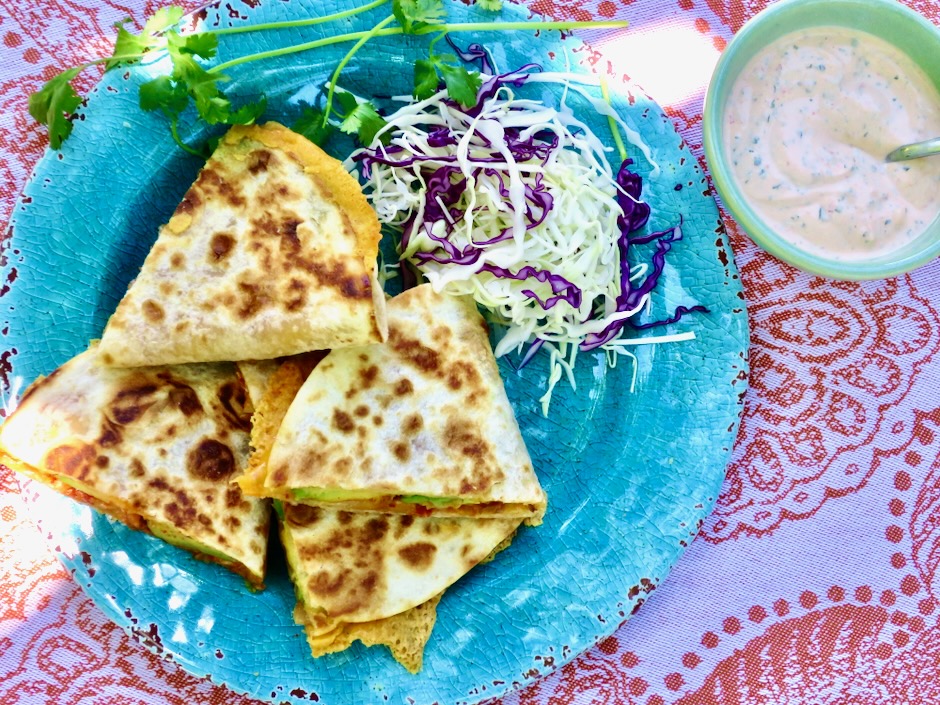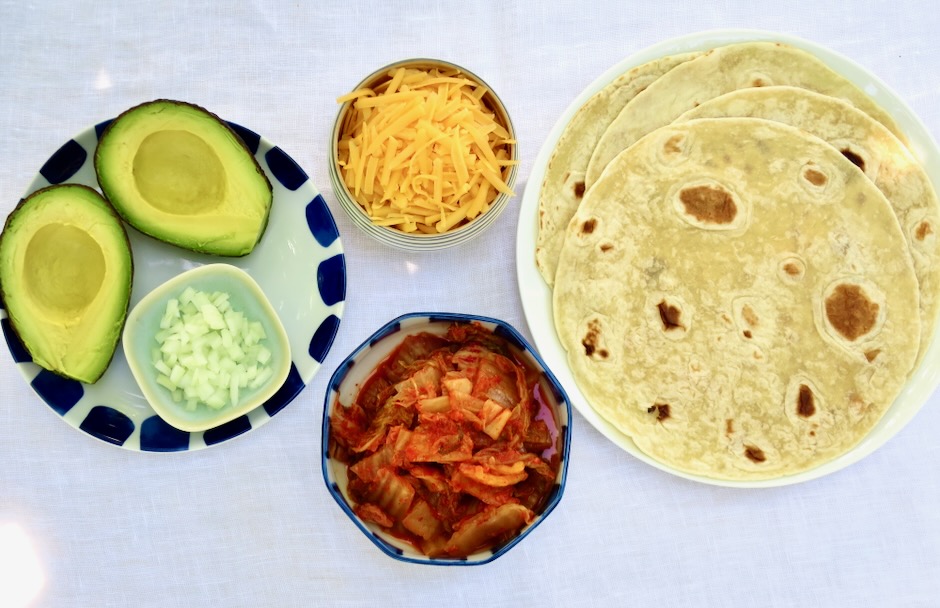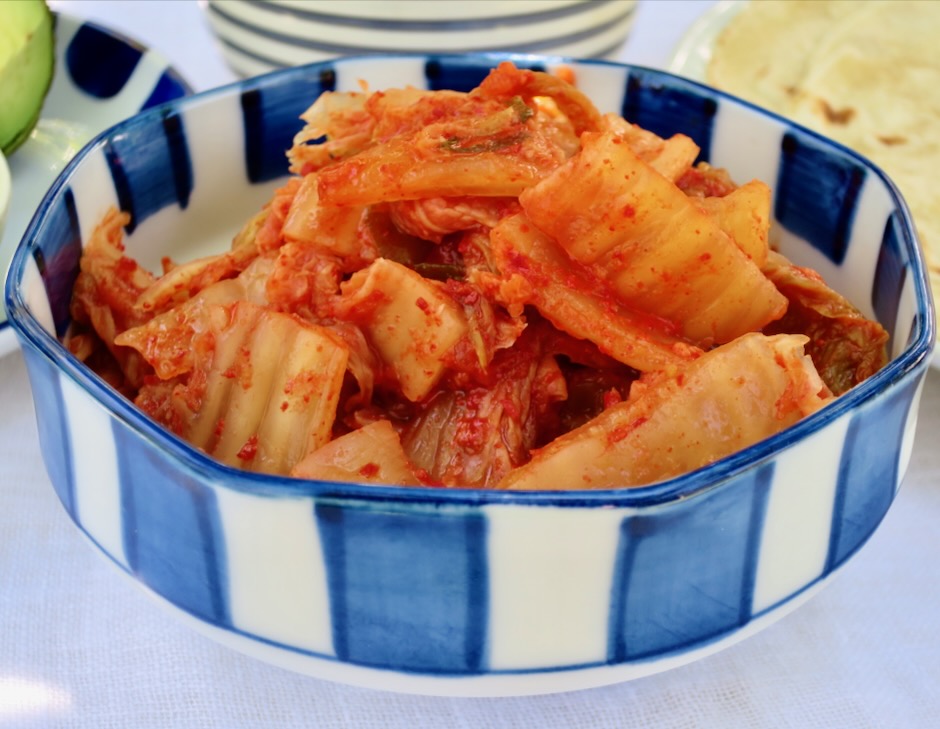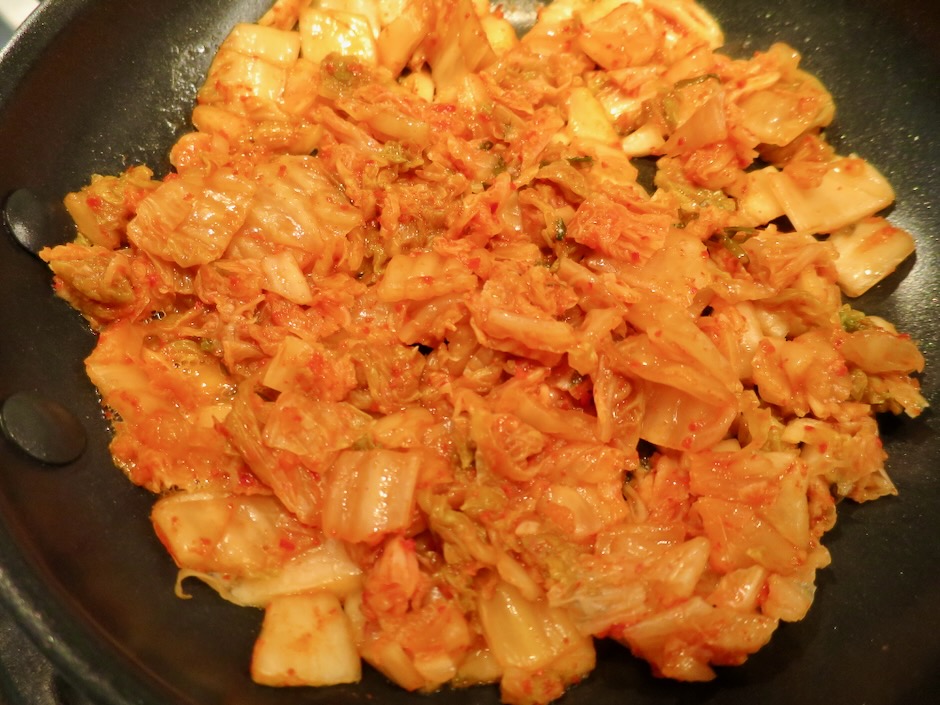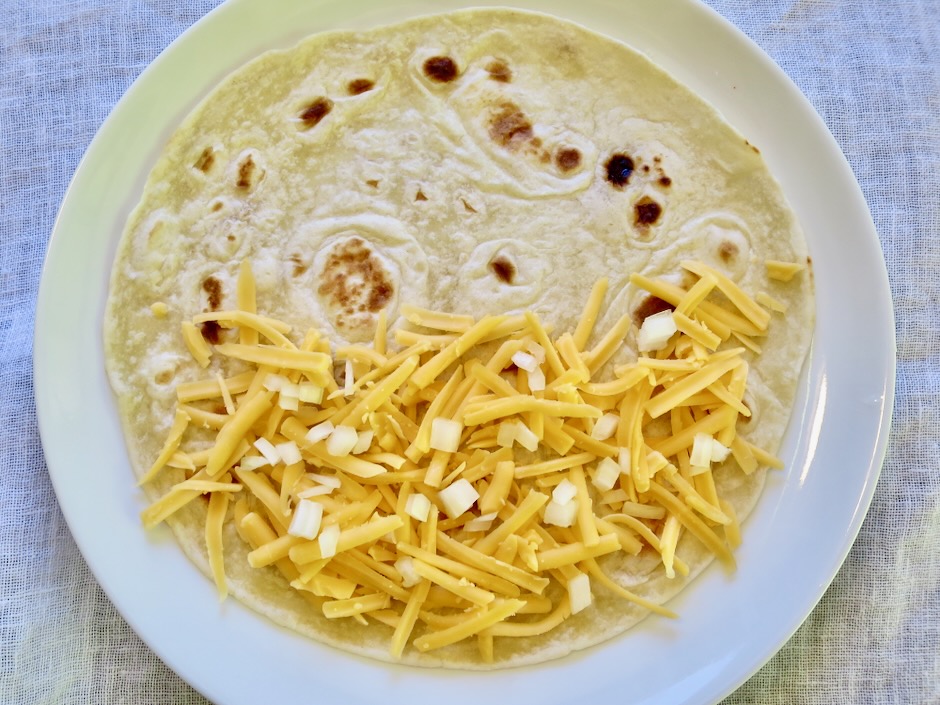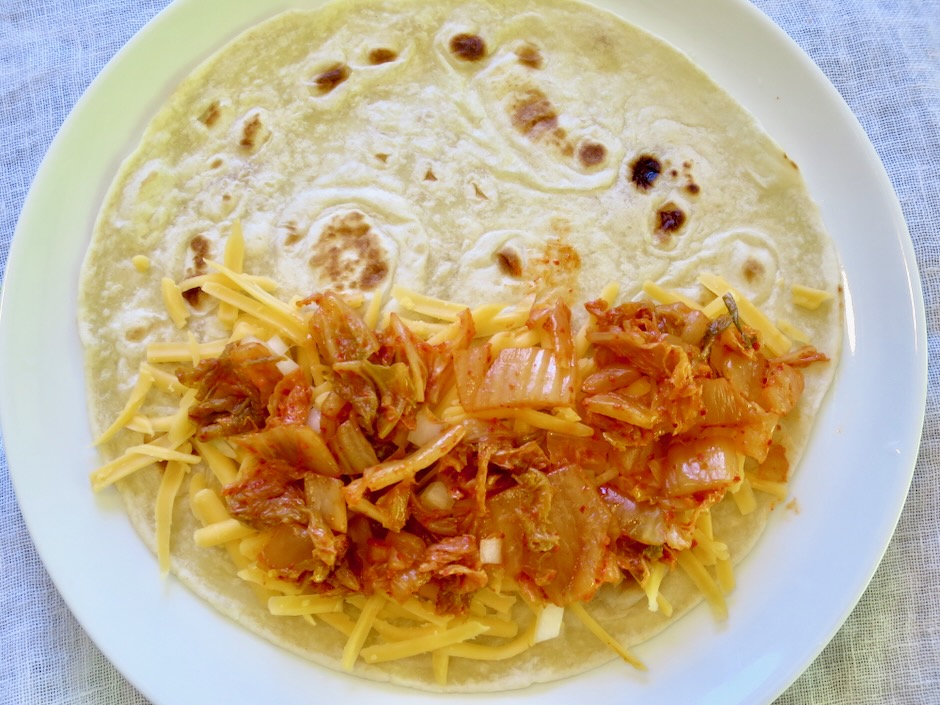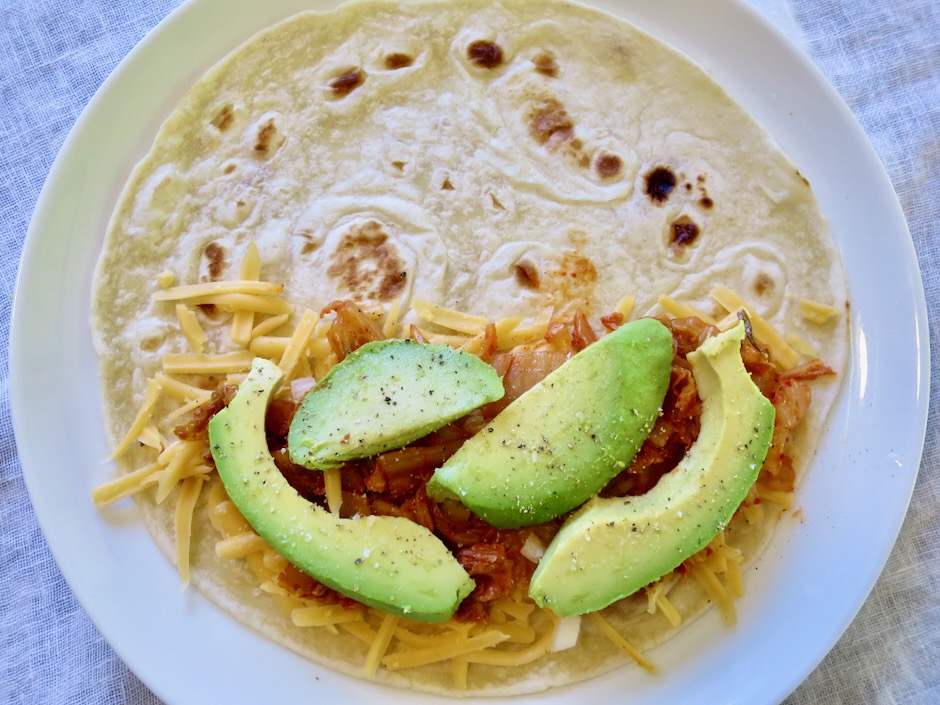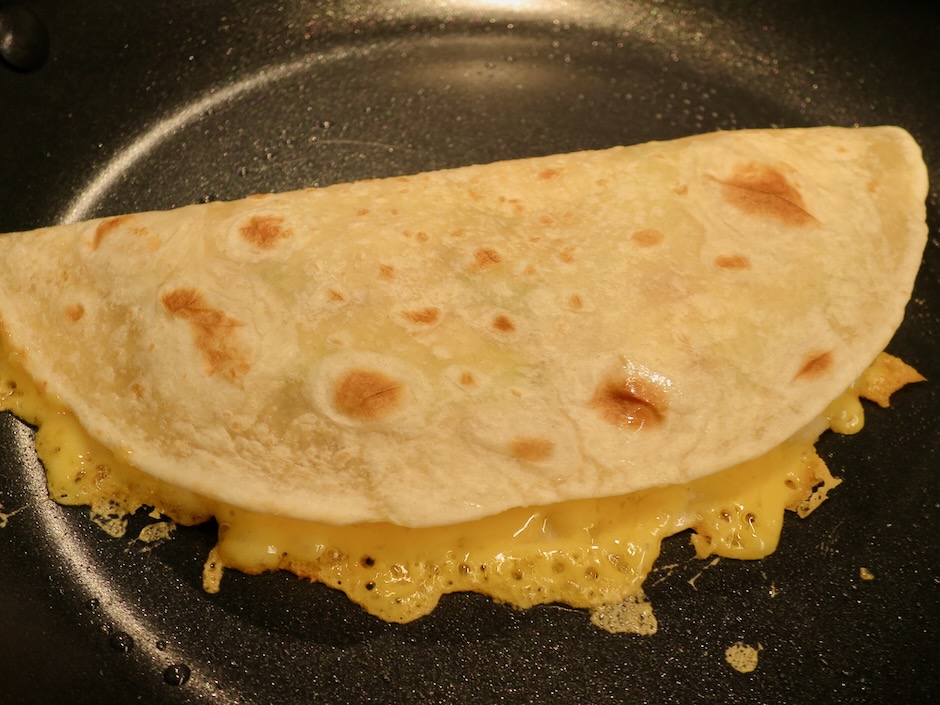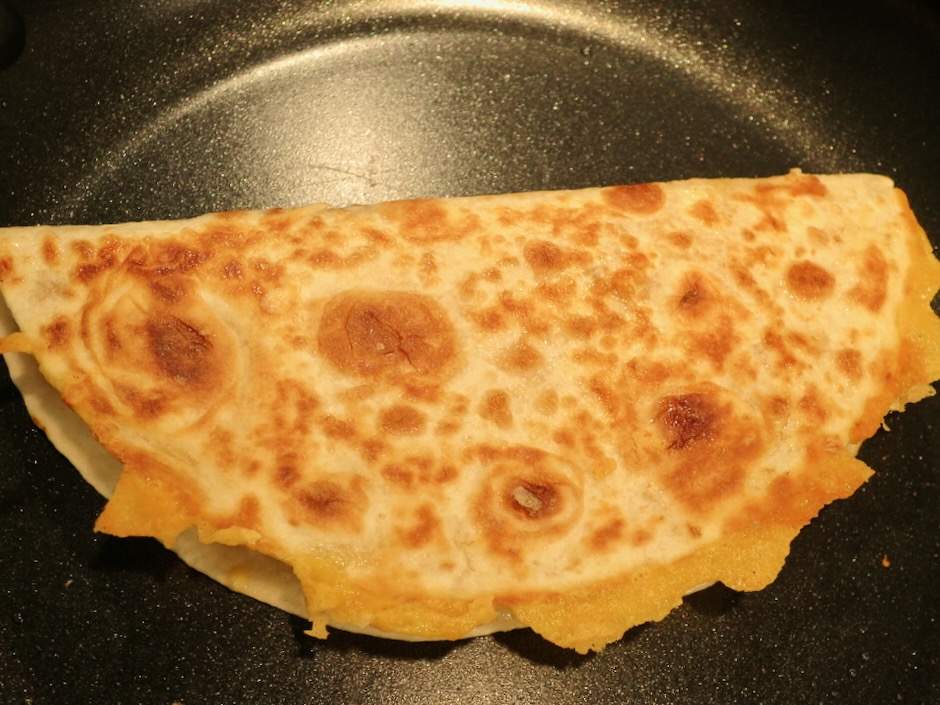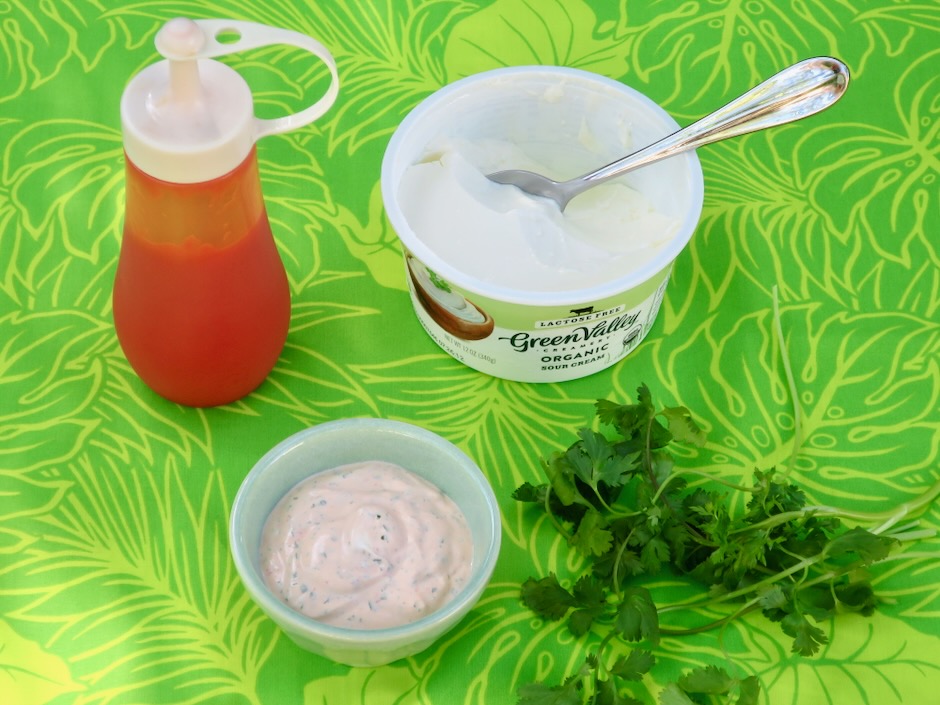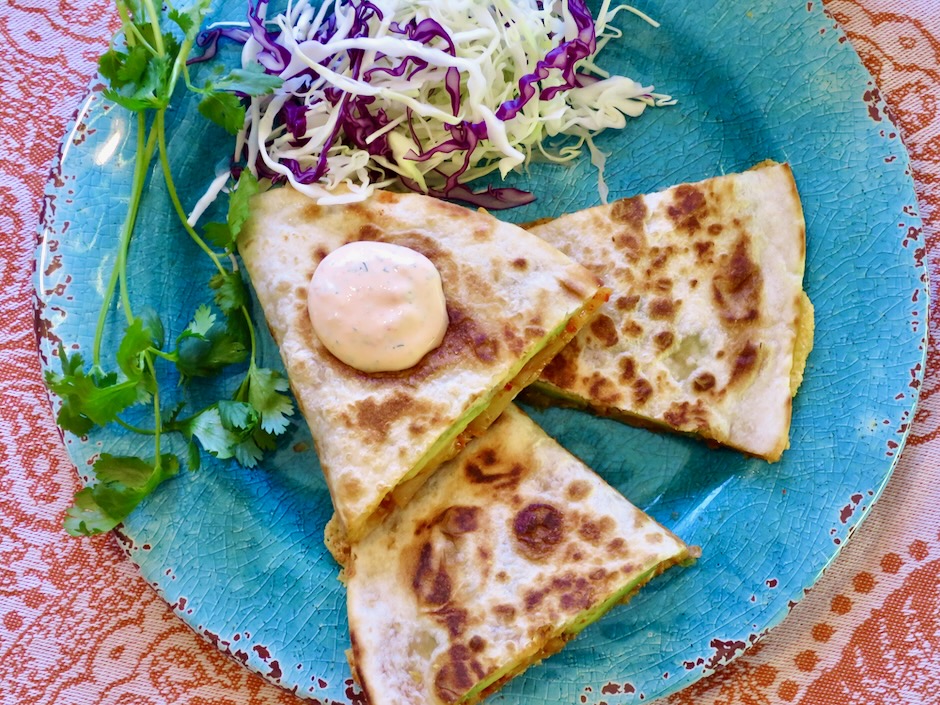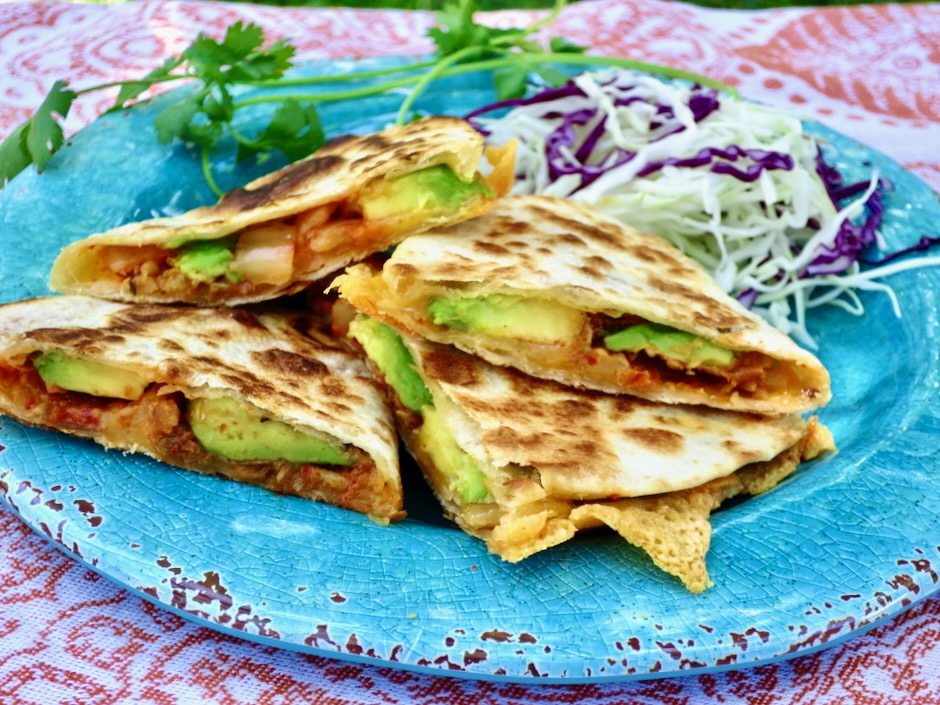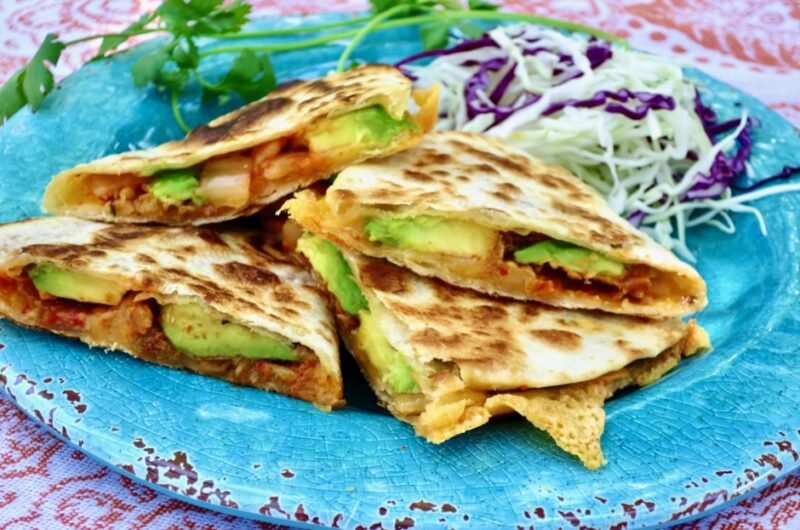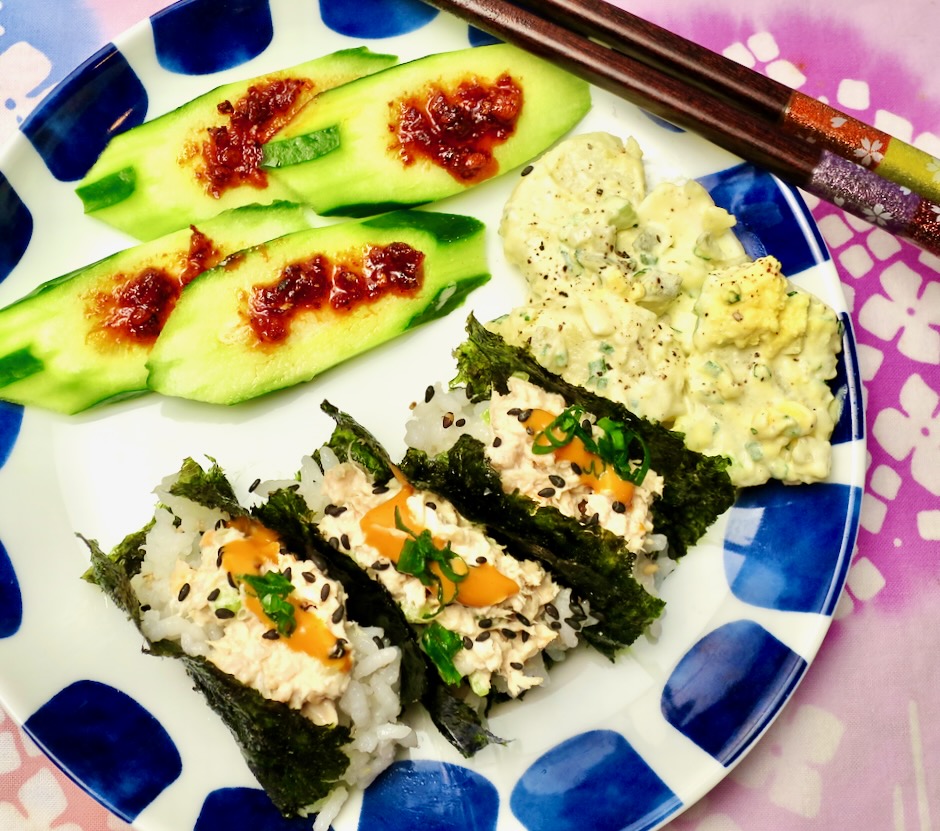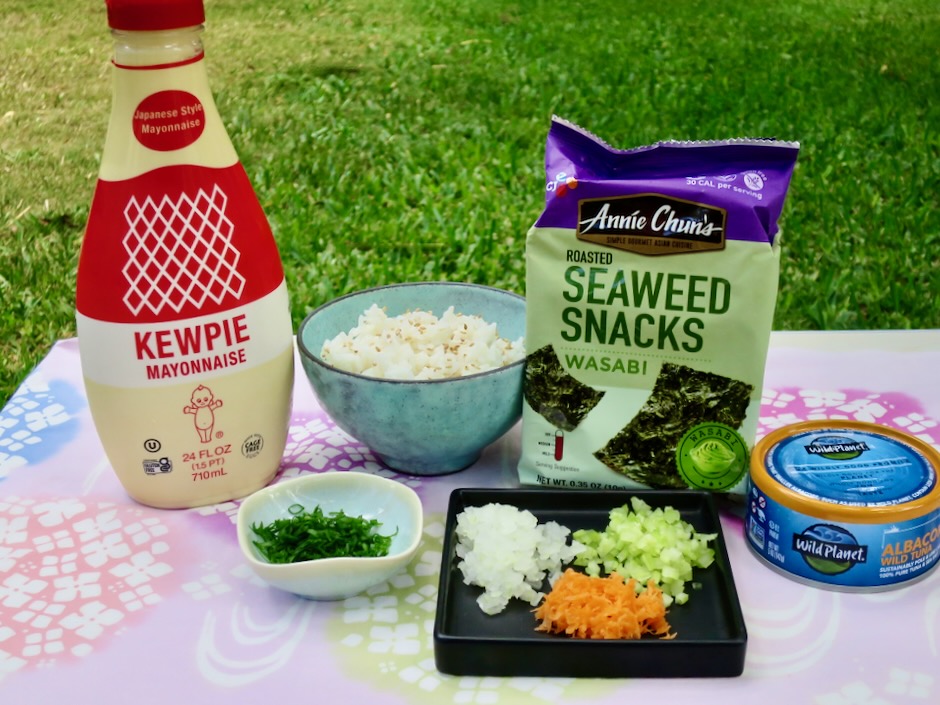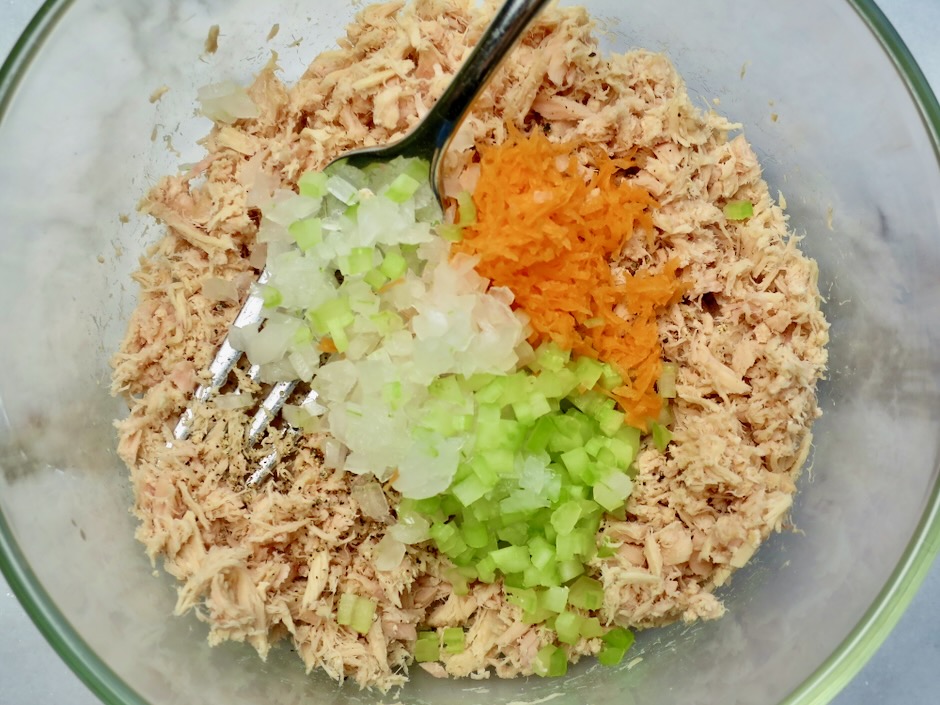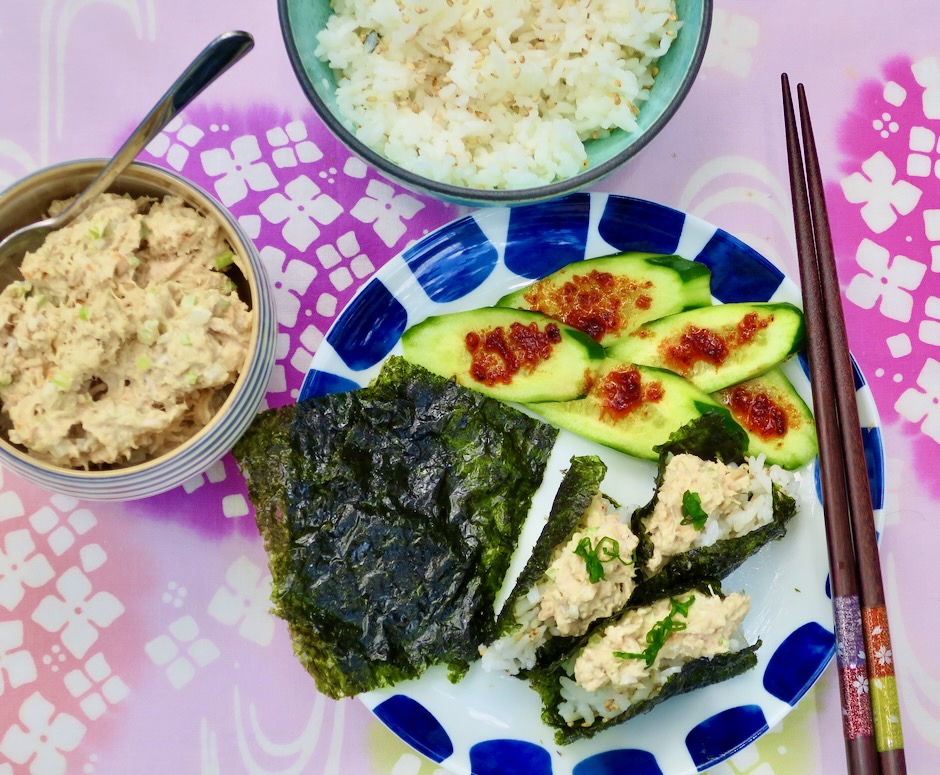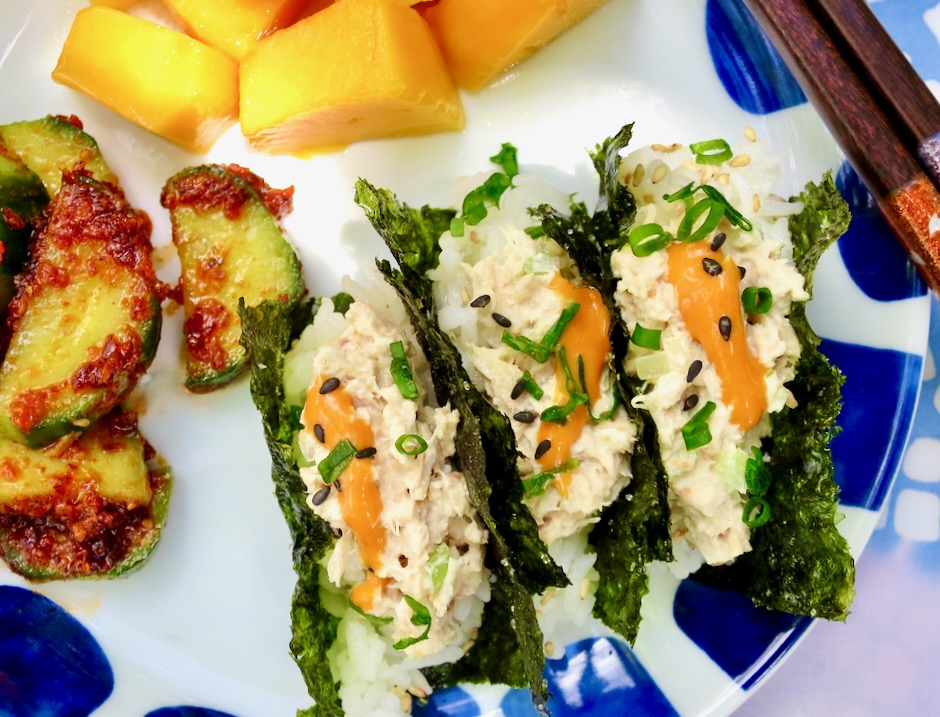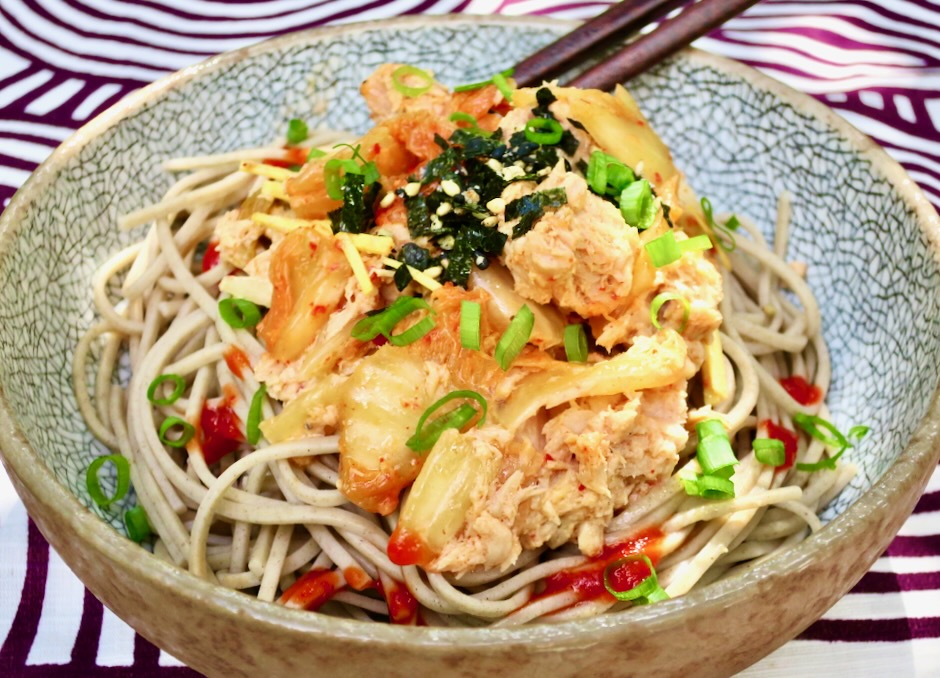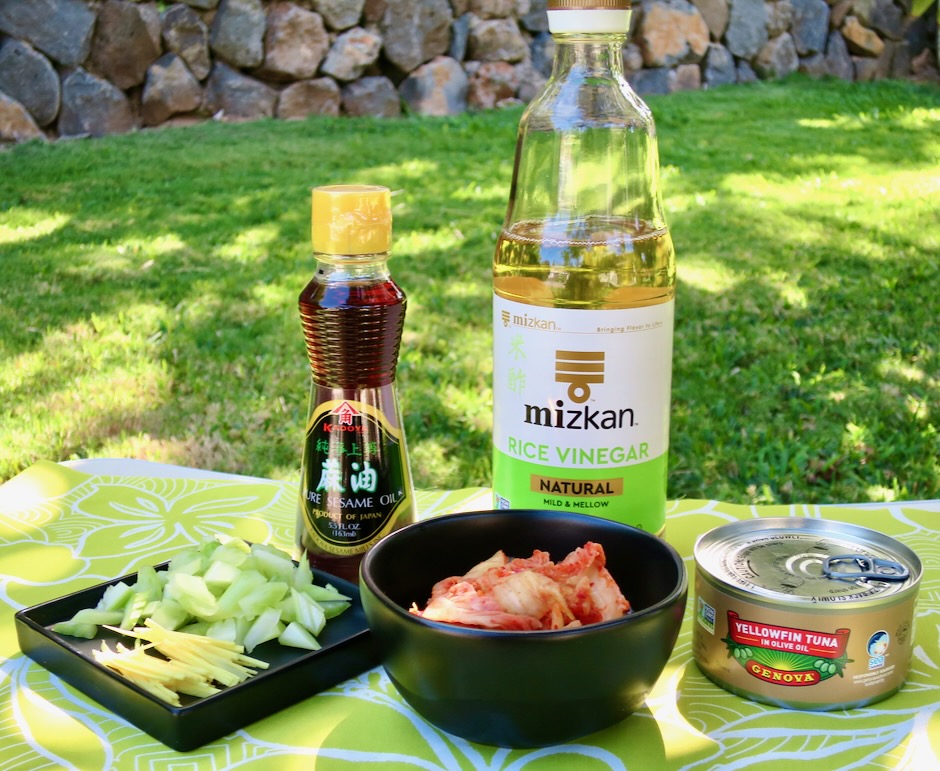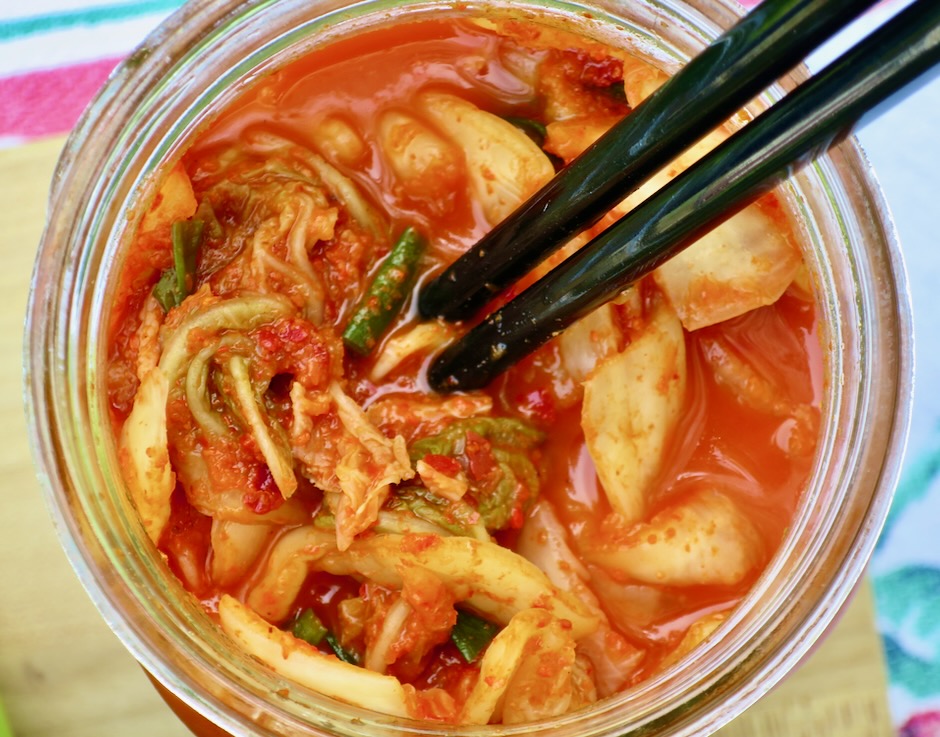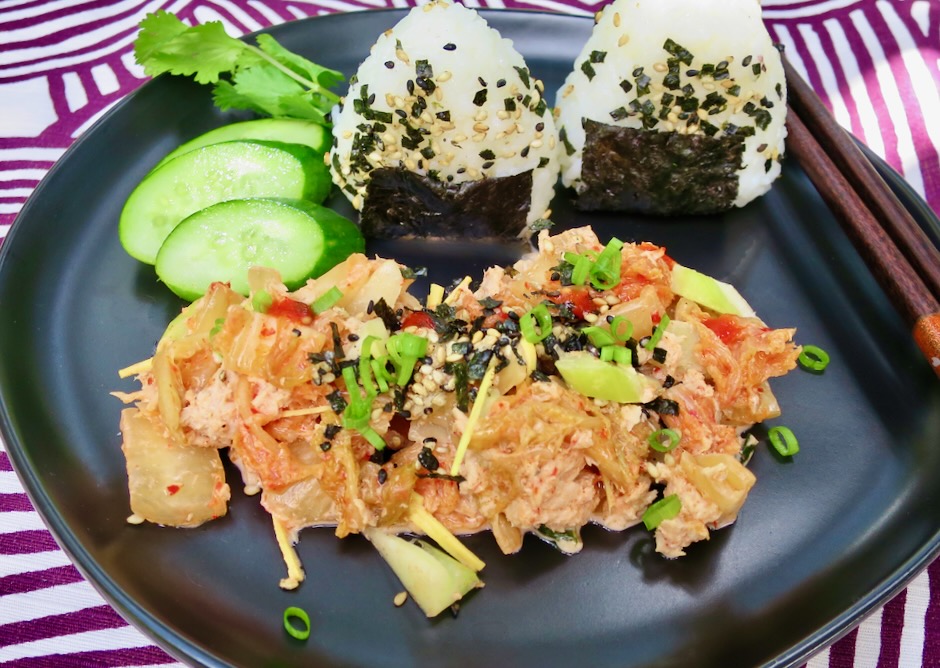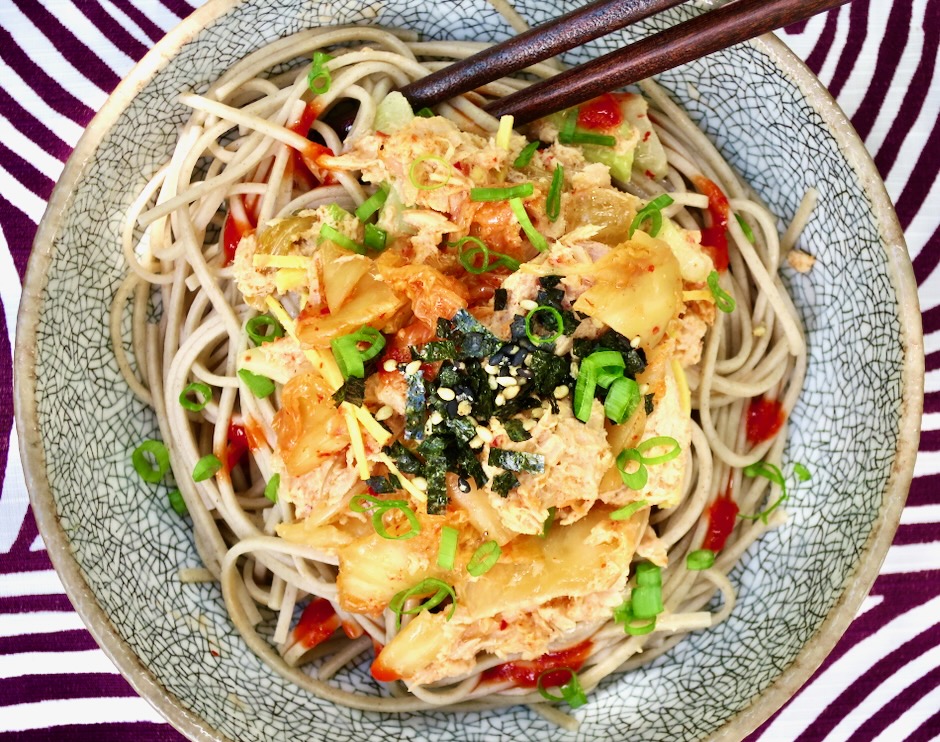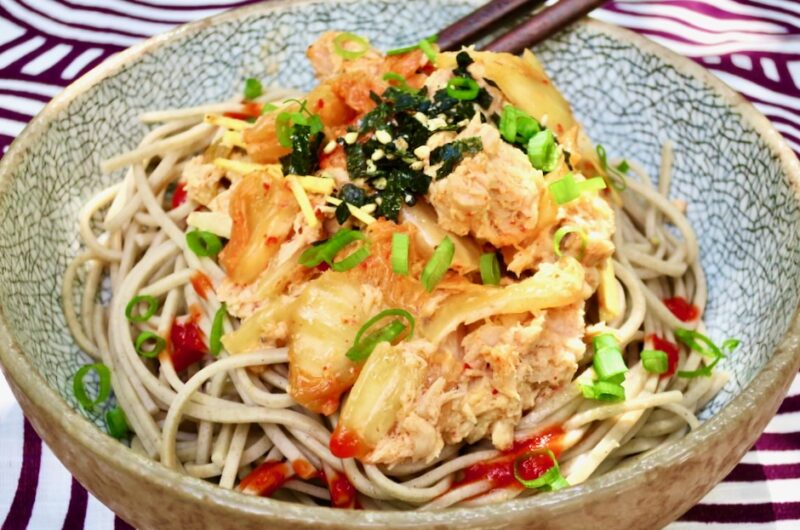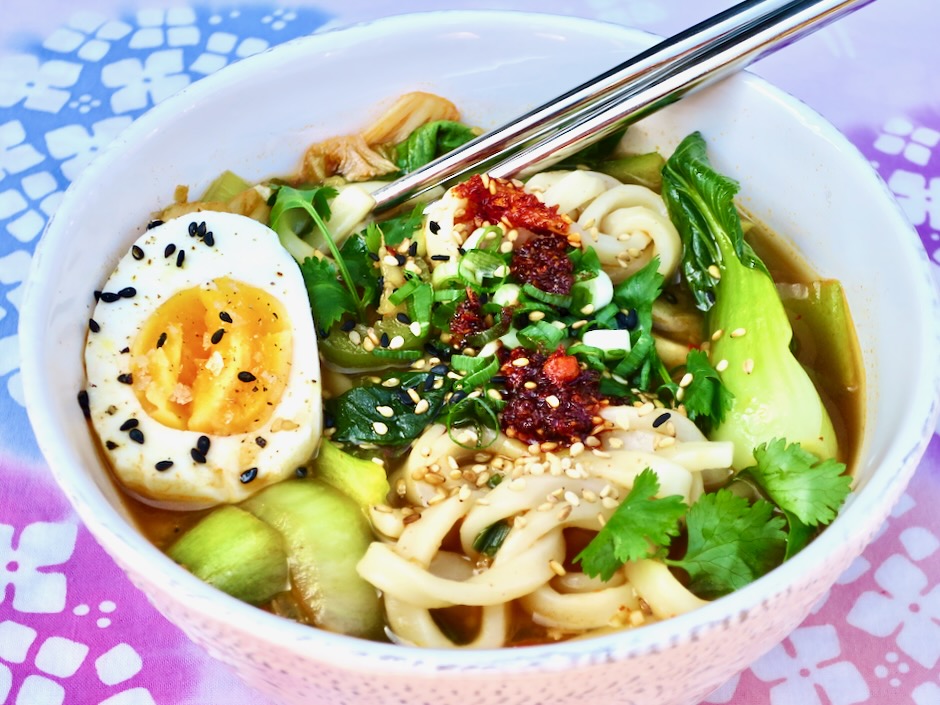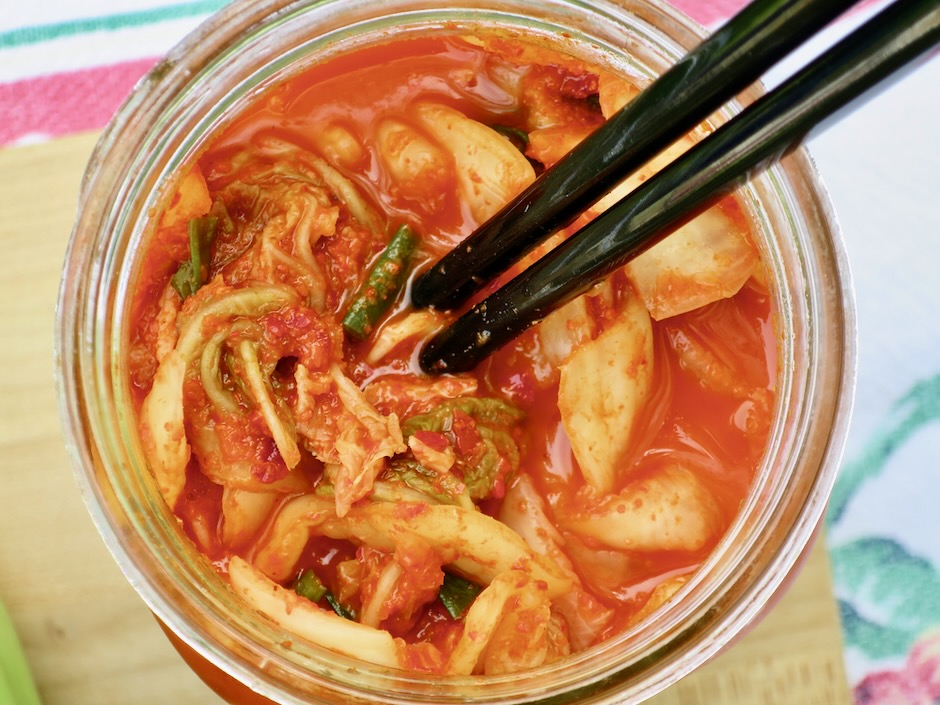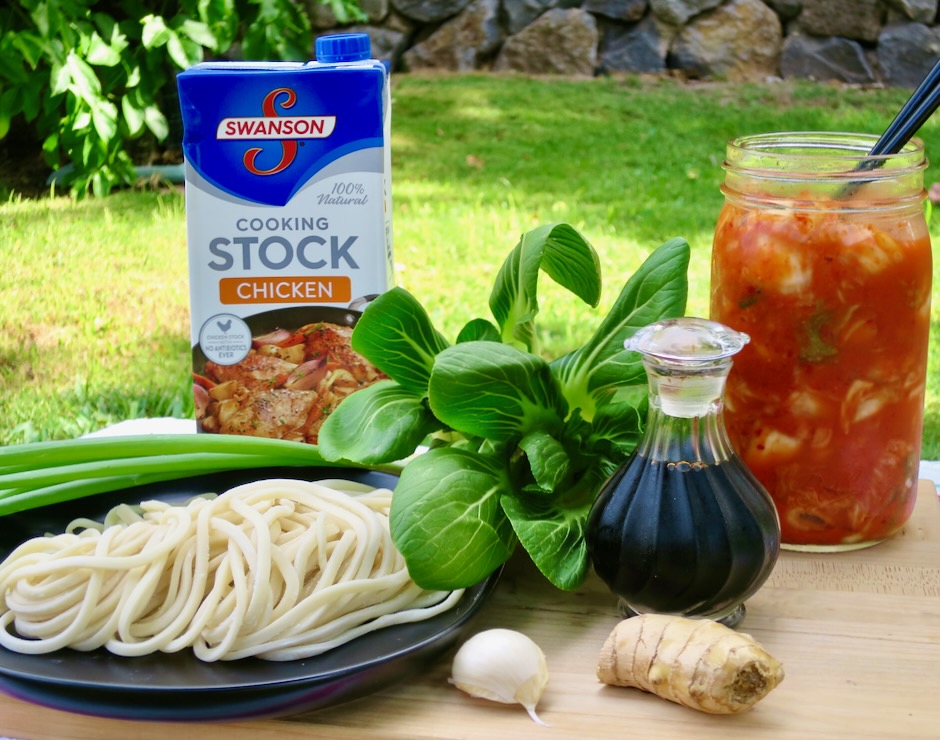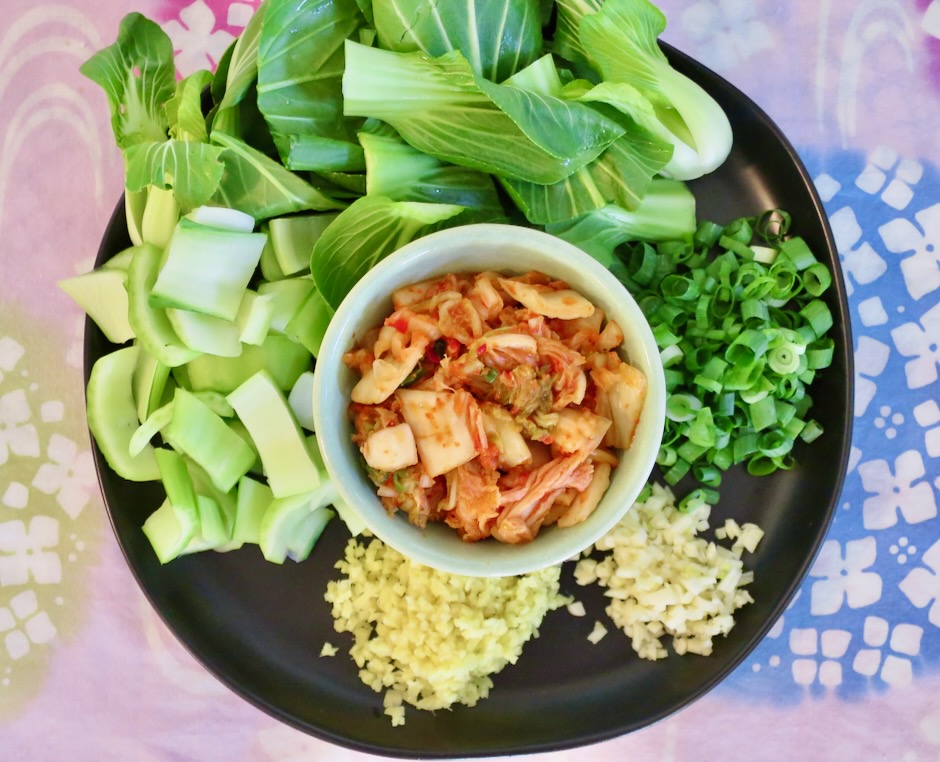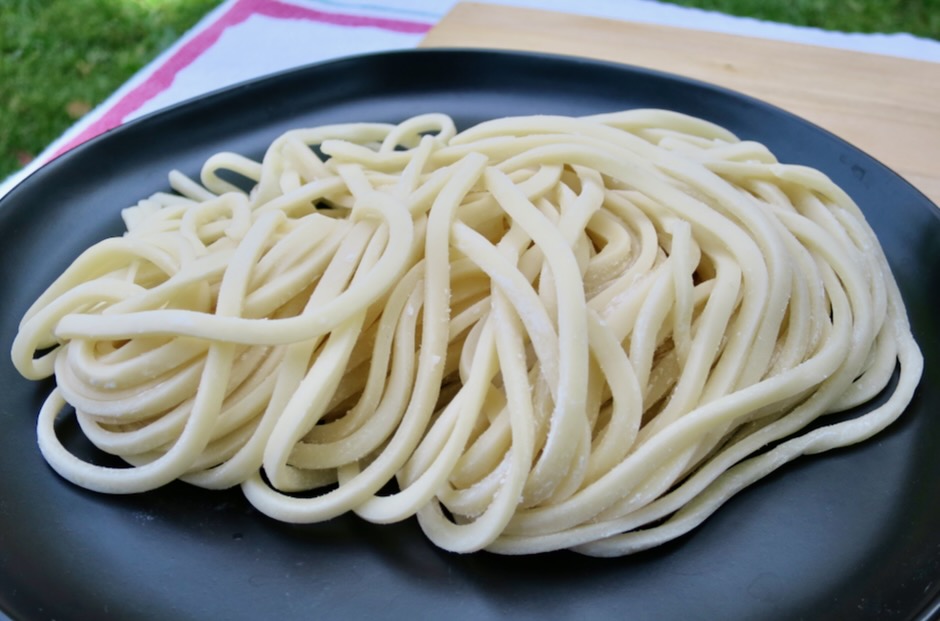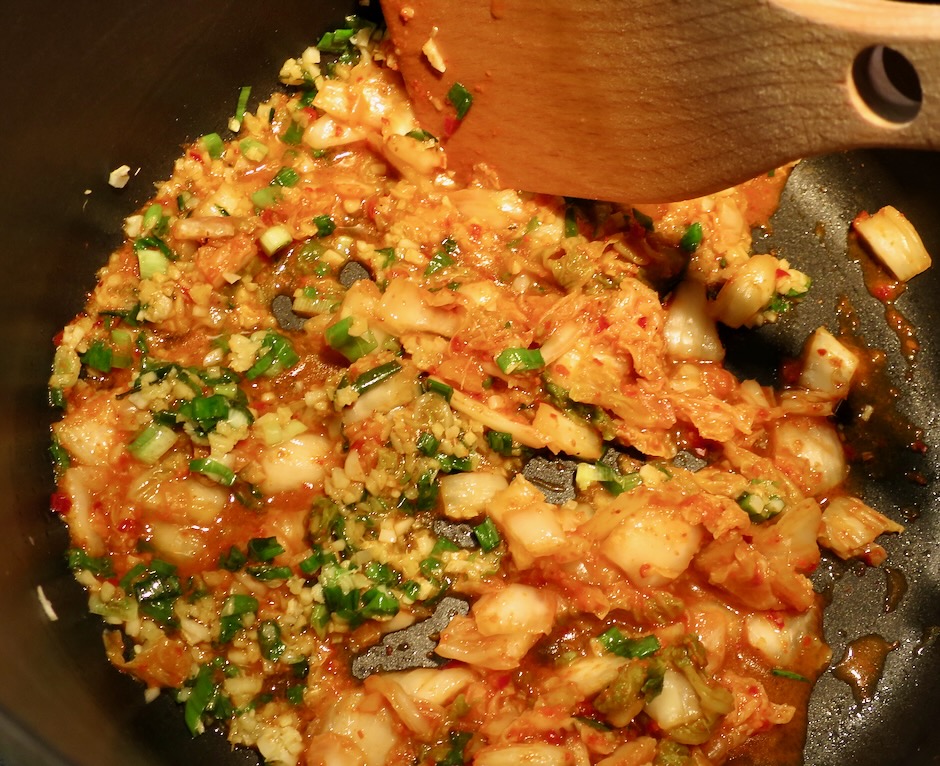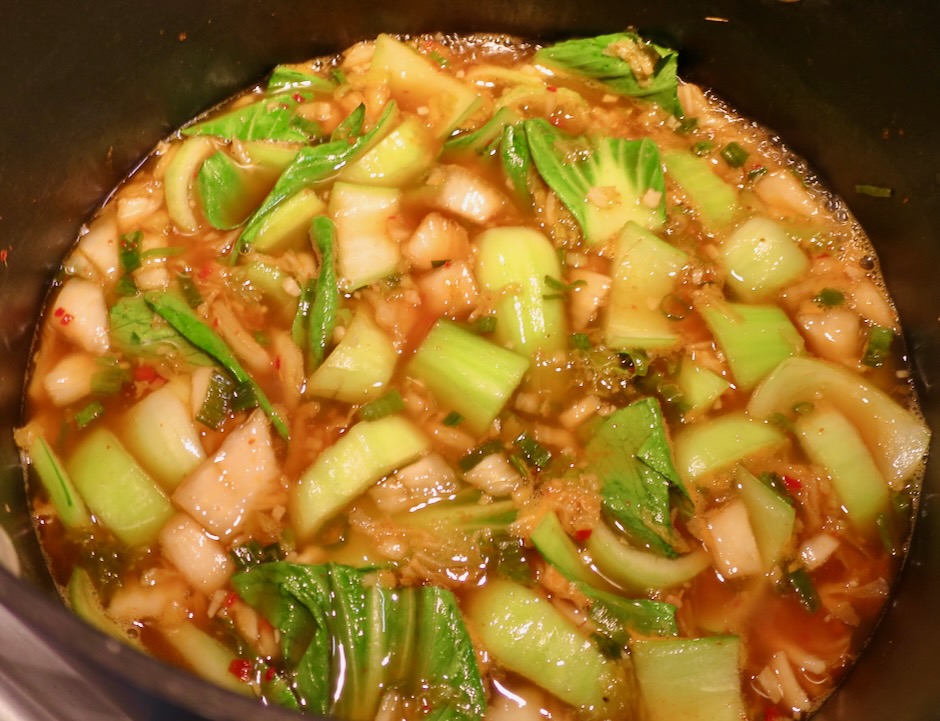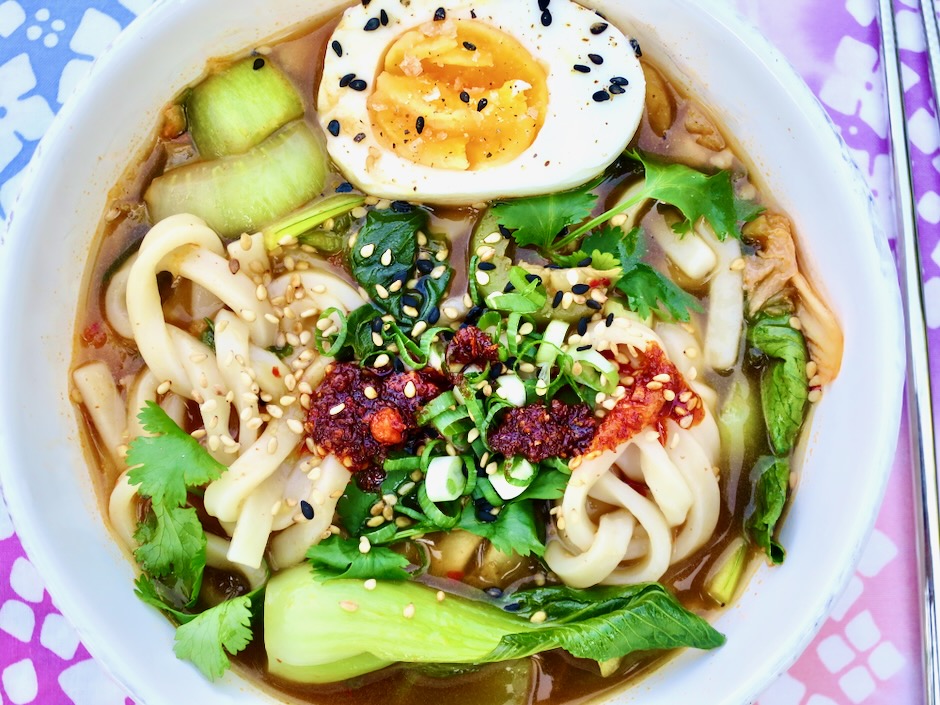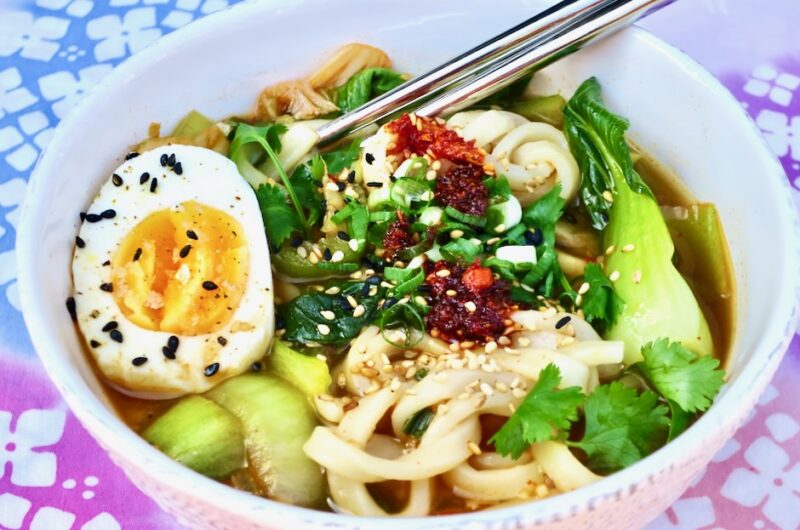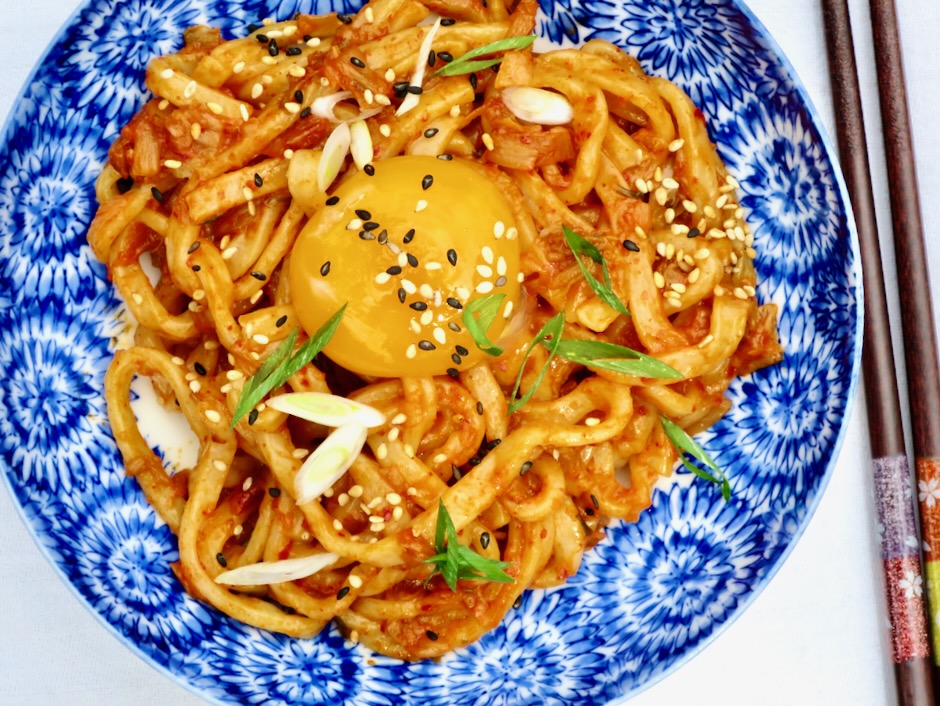
I made another batch of kimchi last week so here goes….kimchi udon with scallions and a silky egg yolk to top things off. This is a dreamy kind of noodle dish. The butter and egg yolk transform plain udon into extraordinary udon and the kimchi and gochujang sauce provides the perfect amount of spiciness to the springy noodles.
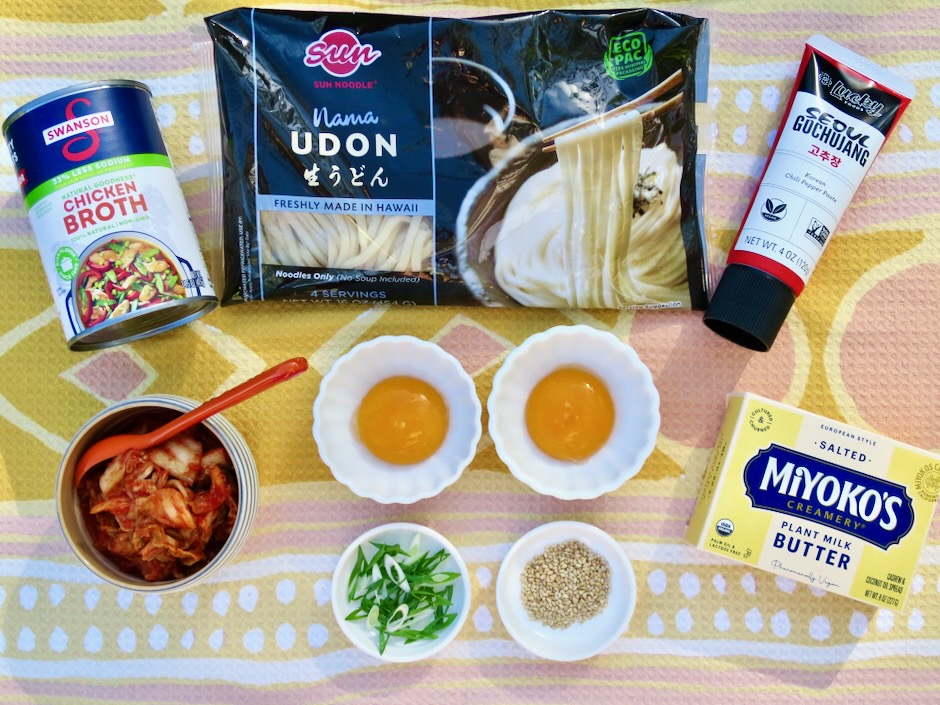
The original recipe calls for room temperature egg yolks. But I prefer to take an extra step to ensure the yolks I’m using are safe to eat. By pasteurizing the egg via sous vide, it is completely acceptable to eat without worrying about harmful bacteria. If you do not own a sous vide device, you can check your local markets for pasteurized eggs (not to be confused with pasture raised). I haven’t seen pasteurized eggs at any Maui markets so in this case I would suggest using a soft poached egg.
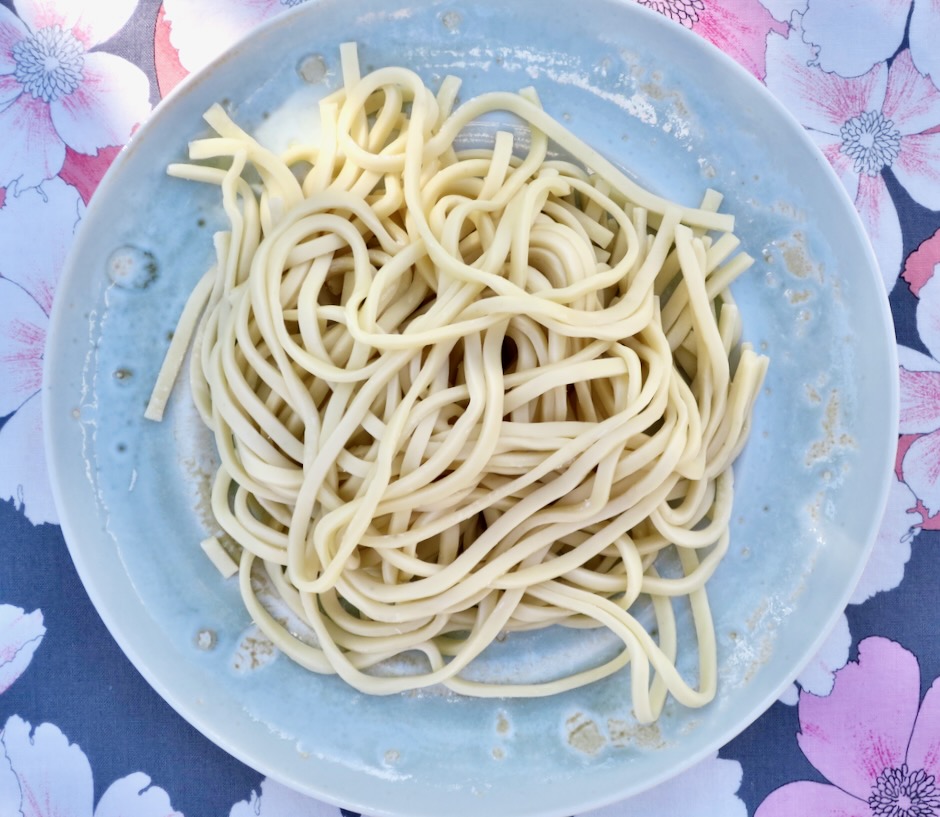
You will want to purchase fresh udon (or frozen) for this dish. Dried udon won’t have the same texture. It is much thinner and lacks that bouncy texture you find with fresh noodles. Here on Maui you can find fresh Sun Noodle udon at Island Grocery.
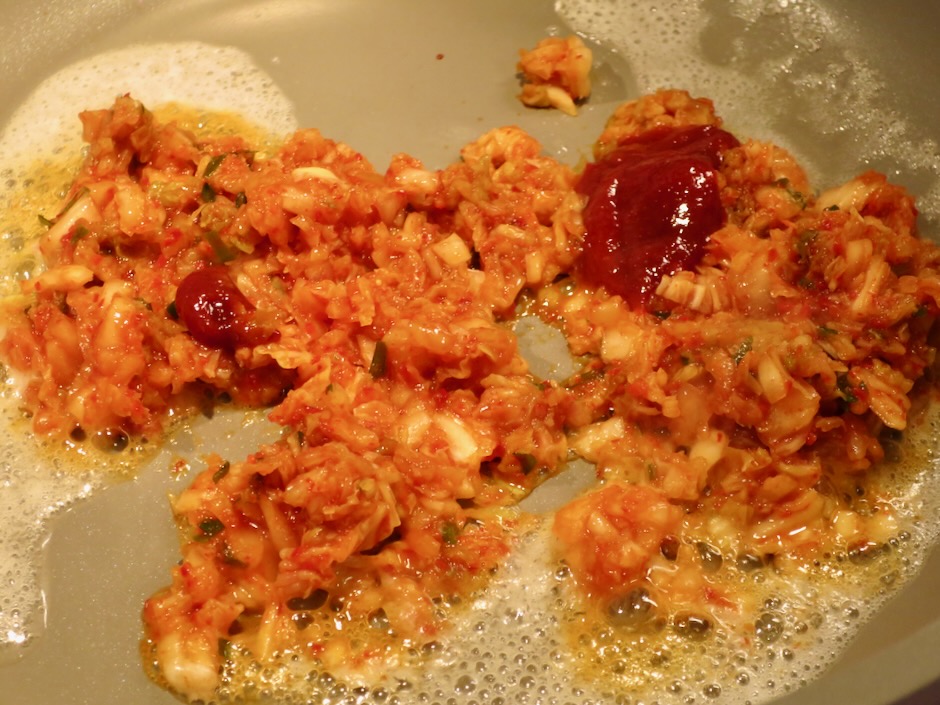
The kimchi, gochujang and butter (umami bomb!) are fried for a bit before adding the cooked noodles. You can use your favorite store-bought kimchi for this recipe.
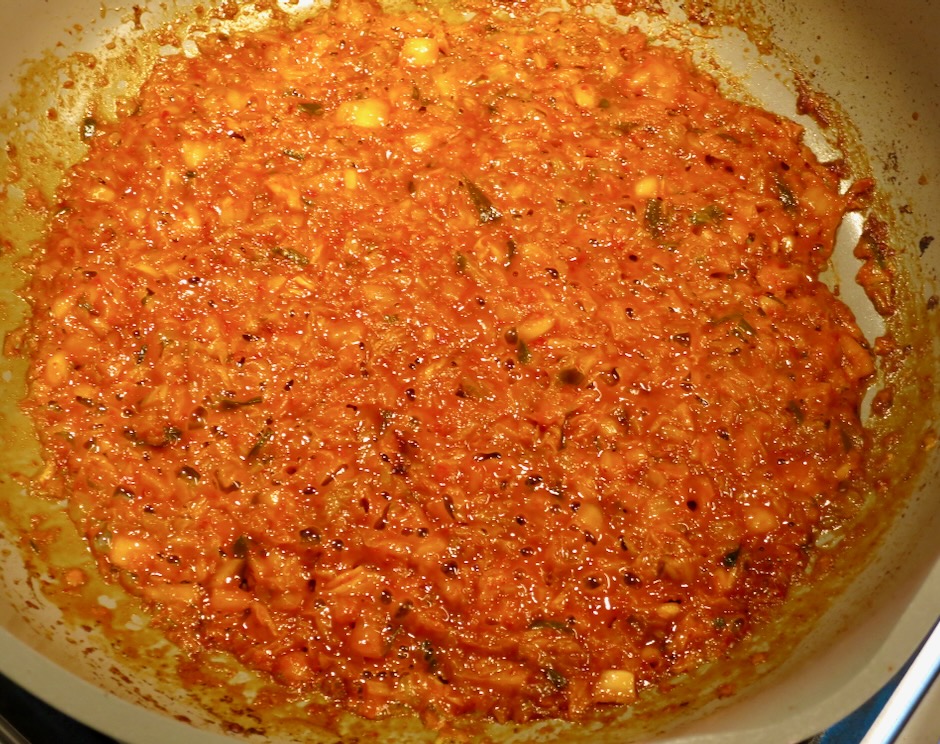
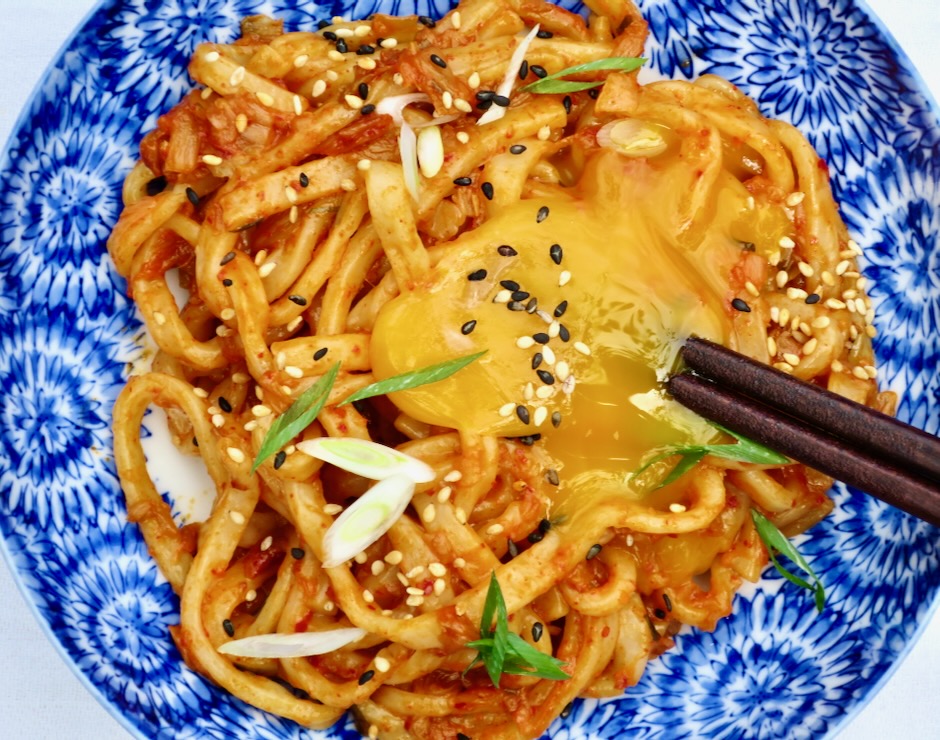
The egg yolk mixed in with the hot kimchi udon creates a velvety sauce that makes this dish extra fancy. Grab your chopsticks and dive in to what may become your new favorite bowl of udon.
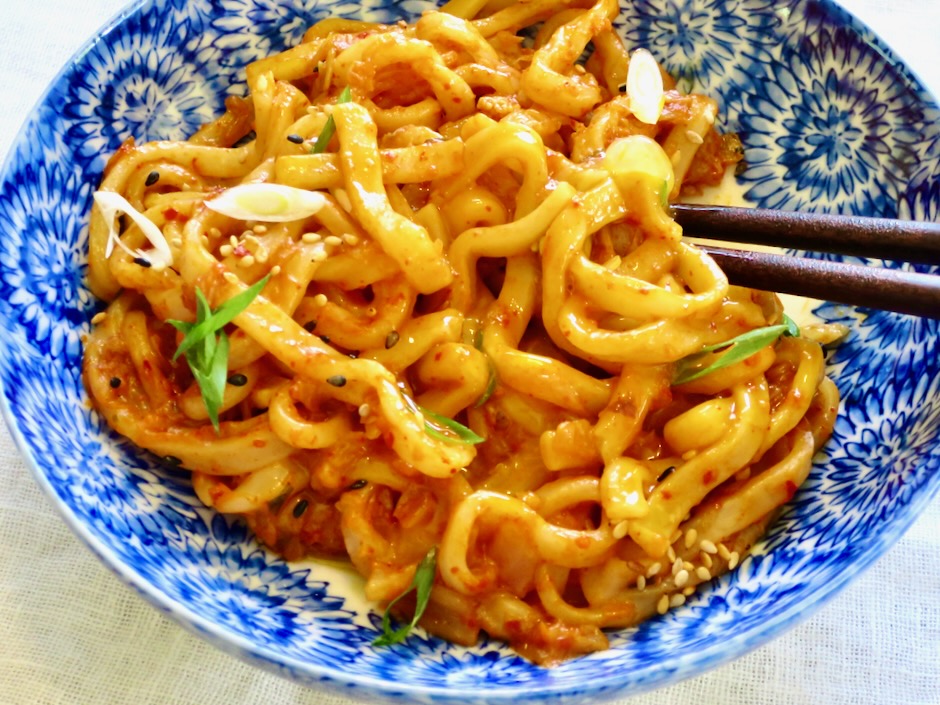
Kimchi Udon with Scallions
2
servingsAdapted from Bon Appetit magazine
Ingredients
2 1/2 tablespoons Miyoko’s vegan butter or regular unsalted butter
1/2 cup finely chopped kimchi, plus 2 tablespoons kimchi juice
1 tablespoon gochujang
1/4 cup low-sodium chicken broth, vegetable broth or water
8 ounces fresh or frozen udon noodles
2 pasteurized egg yolks at room temperature or substitute with soft poached eggs
2 scallions, white and pale green parts only, thinly sliced on the diagonal
1 teaspoon roasted sesame seeds
Directions
- Bring a large pot of water to a boil and cook noodles according to package directions.
- Meanwhile, heat 1 tablespoon Miyoko’s vegan butter (or regular butter) in a large skillet over medium-high heat. Add chopped kimchi and gochujang and cook, stirring occasionally , until kimchi is softened and lightly browned, about 3 minutes (adjust heat as needed). Add broth (or water) and kimchi juice and bring to a simmer. Cook until liquid is slightly reduced, about 2 minutes
- Using tongs, transfer noodles to skillet with sauce and add remaining 1 1/2 tablespoons Miyoko’s vegan butter (or regular butter). Cook, tossing often, until sauce coats noodles, 1-2 minutes. Taste and season with salt if needed.
- Divide noodles among two bowls and top each with an egg yolk. Scatter scallions and sesame seeds over the udon. Serve immediately.
Notes
- Sous vide eggs at 135 degrees for 1 1/2 hours. Place in ice bath to cool, then transfer eggs to refrigerator if making in advance. Separate egg yolks from whites (save whites for another use) and let yolks come to room temperature before serving, about 30 minutes.
